
*
E.T.A. Hoffmann
Der Magnetiseur
Eine Familienbegebenheit (Erstdruck 1814)
Träume sind Schäume
„Träume sind Schäume“, sagte der alte Baron, indem er die Hand nach der Klingelschnur ausstreckte, um den alten Kaspar herbeizurufen, der ihm ins Zimmer leuchten sollte; denn es war spät geworden, ein kalter Herbstwind strich durch den übel verwahrten Sommersaal, und Maria, in ihren Shawl fest eingewickelt, schien mit halbgeschlossenen Augen sich des Einschlummerns nicht mehr erwehren zu können. – „Und doch“, fuhr er fort, die Hand wieder zurückziehend, und aus dem Lehnstuhl vorgebeugt beide Arme auf die Kniee stützend – „und doch erinnere ich mich manches merkwürdigen Traumes aus meiner Jugendzeit!“ – „Ach, bester Vater“, fiel Ottmar ein, „welcher Traum ist denn nicht merkwürdig, aber nur die, welche irgend eine auffallende Erscheinung verkündigen – mit Schillers Worten: die Geister, die den großen Geschicken voranschreiten – die uns gleich mit Gewalt in das dunkle geheimnisvolle Reich stoßen, dem sich unser befangener Blick nur mit Mühe erschließt, nur die ergreifen uns mit einer Macht, deren Einwirkung wir nicht ableugnen können.“
„Träume sind Schäume“, wiederholte der Baron mit dumpfer Stimme, „und selbst in diesem Weidspruch der Materialisten, die das Wunderbarste ganz natürlich, das Natürlichste aber oft abgeschmackt und unglaublich finden“, erwiderte Ottmar, „liegt eine treffende Allegorie.“ – „Was wirst du in dem alten verbrauchten Sprichwort wieder Sinniges finden?“ fragte gähnend Maria. – Lachend erwiderte Ottmar mit Prosperos Worten: „Zieh deiner Augen Fransenvorhang auf, und hör mich freundlich an! – Im Ernst, liebe Maria, wärst du weniger schläfrig, so würdest du selbst schon geahnet haben, daß, da von einer über alle Maßen herrlichen Erscheinung im menschlichen Leben, nämlich vom Traume die Rede ist, ich mir bei der Zusammenstellung mit Schaum auch nur den edelsten denken kann, den es gibt. – Und das ist denn doch offenbar der Schaum des gärenden, zischenden, brausenden Champagners, den du abzunippen auch nicht verschmähst, unerachtet du sonst recht jüngferlich und zünferlich allen Rebensaft schnöde verachtest. Sieh die tausend kleinen Bläschen, die perlend im Glase aufsteigen und oben im Schaume sprudeln, das sind die Geister, die sich ungeduldig von der irdischen Fessel loslösen; und so lebt und webt im Schaum das höhere geistige Prinzip, das frei von dem Drange des Materiellen frisch die Fittige regend, in dem fernen uns allen verheißenen himmlischen Reiche sich zu dem verwandten höheren Geistigen freudig gesellt, und alle wundervollen Erscheinungen in ihrer tiefsten Bedeutung wie das Bekannteste aufnimmt und erkennt. Es mag daher auch der Traum von dem Schaum, in welchem unsere Lebensgeister, wenn der Schlaf unser extensives Leben befängt, froh und frei aufsprudeln, erzeugt werden und ein höheres intensives Leben beginnen, in dem wir alle Erscheinungen der uns fernen Geisterwelt nicht nur ahnen, sondern wirklich erkennen, ja in dem wir über Raum und Zeit schweben.“ – „Mich dünkt“, unterbrach ihn der alte Baron, wie sich von einer Erinnerung, in die er versunken, gewaltsam losreißend, „ich höre deinen Freund Alban sprechen. Ihr kennt mich als euern unzubekehrenden Gegner; so ist das alles, was du soeben gesagt, recht schön anzuhören, und gewisse empfindliche oder empfindelnde Seelen mögen sich daran ergötzen, allein schon der Einseitigkeit wegen unwahr. Nach dem, was du da von der Verbindung mit der Geisterwelt, und was weiß ich, schwärmtest, sollte man glauben, der Traum müsse den Menschen in den glückseligsten Zustand versetzen; aber alle die Träume, welche ich deshalb merkwürdig nenne, weil der Zufall ihnen eine gewisse Einwirkung in mein Leben gab – Zufall nenne ich nämlich ein gewisses Zusammentreffen an und für sich selbst fremdartiger Begebenheiten, die nun sich zu einer Totalerscheinung verbinden – alle diese Träume, sage ich, waren unangenehm, ja qualvoll, daß ich oft darüber erkrankte, wiewohl ich mich alles Nachgrübelns darüber enthielt, da es damals noch nicht Mode war, auf alles, was die Natur weise uns fern gerückt hat, Jagd zu machen.“ – „Sie wissen, bester Vater“, erwiderte Ottmar, „wie ich über das alles, was Sie Zufall, Zusammentreffen der Umstände und sonst nennen, mit meinem Freunde Alban denke. – Und was die Mode des Nachgrübelns betrifft, so mag mein guter Vater daran denken, daß diese Mode, als in der Natur des Menschen begründet, uralt ist. Die Lehrlinge zu Sais“ – „Halt“, fuhr der Baron auf, „vertiefen wir uns weiter nicht in ein Gespräch, das ich heute um so mehr zu meiden Ursache habe, als ich mich gar nicht aufgelegt fühle, es mit deinem überbrausenden Enthusiasmus für das Wunderbare aufzunehmen. Nicht leugnen kann ich, daß mich gerade heute am neunten September eine Erinnerung aus meinen Jugendjahren befängt, die ich nicht los werden kann, und sollte ich euch das Abenteuer erzählen, so würde Ottmar den Beweis darin finden, wie ein Traum, oder ein träumerischer Zustand, der sich auf eine ganz eigene Weise an die Wirklichkeit knüpfte, von dem feindlichsten Einfluß auf mich war.“ – „Vielleicht, bester Vater“, sagte Ottmar, „geben Sie mir und meinem Alban einen herrlichen Beitrag zu den vielfachen Erfahrungen, die die jetzt aufgestellte Theorie des magnetischen Einflusses, die von der Untersuchung des Schlafs und des Träumens ausgeht, bestätigen.“ – „Schon das Wort, magnetisch, macht mich erbeben“, zürnte der Baron; „aber jeder nach seiner Weise, und wohl euch, wenn die Natur es leidet, daß ihr mit täppischen Händen an ihrem Schleier zupft, und eure Neugierde nicht mit euerm Untergange bestraft.“ – „Lassen Sie uns, bester Vater!“ erwiderte Ottmar, „nicht über Dinge streiten, die aus der innersten Überzeugung hervorgehen; aber die Erinnerung aus Ihrer Jugendzeit, darf sich denn die nicht in Worten aussprechen?“ – Der Baron setzte sich tief in den Lehnstuhl zurück, und indem er, wie er zu tun pflegte, wenn sein Innerstes angeregt wurde, den seelenvollen Blick in die Höhe richtete, fing er an:
„Ihr wißt, daß ich meine militärische Bildung auf der Ritterakademie in B. erhielt. Unter den dort angestellten Lehrern befand sich nun ein Mann, der mir ewig unvergeßlich bleiben wird; ja ich kann noch jetzt an ihn nicht denken ohne innern Schauer, ohne Entsetzen, möcht ich sagen. Es ist mir oft, als würde er gespenstisch durch die Tür hineinschreiten. – Seine Riesengröße wurde noch auffallender durch die Hagerkeit seines Körpers, der nur aus Muskeln und Nerven zu bestehen schien; er mochte in jüngern Jahren ein schöner Mann gewesen sein, denn noch jetzt warfen seine großen schwarzen Augen einen brennenden Blick, den man kaum ertragen konnte; ein tiefer Fünfziger hatte er die Kraft und die Gewandtheit eines Jünglings; alle seine Bewegungen waren rasch und entschieden. Im Fechten auf Stoß und Hieb war er dem Geschicktesten überlegen, und das wildeste Pferd drückte er zusammen, daß es unter ihm ächzte. Er war ehemals Major in dänischen Diensten gewesen, und hatte, wie man sagte, deshalb flüchten müssen, weil er seinen General im Duell erstochen. Manche behaupteten, dies sei nicht im Duell geschehen, sondern auf ein beleidigendes Wort vom General habe er, ehe dieser sich zur Wehr setzen konnte, ihm den Degen durch den Leib gerannt. Genug, er war aus Dänemark herübergeflüchtet, und mit dem Majors-Range bei der Ritterakademie zum höhern Unterricht in der Fortifikation angestellt. Im höchsten Grade jähzornig, konnte ihn ein Wort, ein Blick in Wut setzen, er bestrafte die Zöglinge mit ausgedachter Grausamkeit, und doch hing alles an ihm auf eine ganz unbegreifliche Weise. So hatte einmal die gegen alle Regel und Ordnung harte Behandlung eines Zöglings die Aufmerksamkeit der Obern erregt, und es wurde eine Untersuchung verfügt; aber gerade dieser Zögling klagte sich nur selbst an, und sprach so eifrig für den Major, daß er aller Schuld entbunden werden mußte. Bisweilen hatte er Tage, in denen er sich selbst nicht ähnlich war. Der sonst harte polternde Ton seiner tiefen Stimme hatte dann etwas unbeschreiblich Sonores, und von seinem Blick konnte man sich nicht losreißen. Gutmütig und weich übersah er jede kleine Ungeschicklichkeit, und wenn er diesem oder jenem, dem etwas besonders gelungen, die Hand drückte, so war es, als habe er ihn, wie durch eine unwiderstehliche Zauberkraft zu seinem Leibeignen gemacht, denn den augenblicklichen schmerzvollsten Tod hätte er gebieten können, und sein Wort wäre erfüllt worden. Auf solche Tage folgte aber gewöhnlich ein schrecklicher Sturm, vor dem jeder sich verbergen oder flüchten mußte. Dann zog er in aller Frühe seine rote dänische Staatsuniform an und lief mit Riesenschritten, gleichviel, war es Sommer oder Winter, in dem großen Garten, der sich an das Palais der Ritterakademie anschloß, rastlos den ganzen Tag umher. Man hörte ihn mit schrecklicher Stimme und mit den heftigsten Gestikulationen dänisch sprechen – er zog den Degen – er schien es mit einem fürchterlichen Gegner zu tun zu haben – er empfing – er parierte Stöße – endlich war durch einen wohlberechneten Stoß der Gegner gefallen, und unter den gräßlichsten Flüchen und Verwünschungen schien er den Leichnam mit den Füßen zu zermalmen. Nun flüchtete er mit unglaublicher Schnelle durch die Alleen, er erkletterte die höchsten Bäume und lachte dann höhnisch herab, daß uns, die wir es bis in das Zimmer hören konnten, das Blut in den Adern erstarrte. Gewöhnlich tobte er auf diese Art vierundzwanzig Stunden, und man bemerkte, daß er in der Tag- und Nachtgleiche jedesmal von diesem Paroxismus befallen wurde. Den Tag darauf schien er von allem, was er unternommen, auch nicht das mindeste zu ahnen, nur war er störrischer, jähzorniger, härter als je, bis er wieder in jene gutmütige Stimmung geriet. Ich weiß nicht woher die wunderlichen, abenteuerlichen Gerüchte kamen, die von ihm unter den Dienstboten der Akademie und sogar in der Stadt unter dem gemeinen Volke verbreitet wurden. So hieß es von ihm, er könne das Feuer besprechen, und Krankheiten durch das Auflegen der Hände, ja durch den bloßen Blick heilen, und ich erinnere mich, daß er einmal Leute, die durchaus von ihm auf diese Art geheilt sein wollten, mit Stockschlägen verjagte. Ein alter Invalide, der zu meiner Aufwartung bestimmt war, äußerte ganz unverhohlen, daß man wohl wisse, wie es mit dem Herrn Major nicht natürlich zugehe, und daß vor vielen Jahren einmal im Sturm auf der See der böse Feind zu ihm getreten, und ihm Rettung aus der Todesnot, sowie übermenschliche Kraft, allerlei Wunderbares zu wirken, verheißen, welches er denn angenommen und sich dem Bösen ergeben habe; nun habe er oft harte Kämpfe mit dem Bösen zu bestehen, den man bald als schwarzer Hund, bald als ein anderes häßliches Tier im Garten umherlaufen sehe, aber über kurz oder lang werde der Major doch gewiß auf eine schreckliche Weise unterliegen müssen. So albern und abgeschmackt mir diese Erzählungen vorkamen, so konnte ich mich doch eines gewissen innern Schauers nicht erwehren, und unerachtet ich die ganz besondere Zuneigung, die der Major mir allein vor allen andern bewies, mit getreuer Anhänglichkeit erwiderte, so mischte sich doch in mein Gefühl für den sonderbaren Mann ein unbegreifliches Etwas, das mich unaufhörlich verfolgte, und das ich mir selbst nicht erklären konnte. Es war, als würde ich von einem höhern Wesen gezwungen, treu an dem Mann zu halten, als würde der Augenblick des Aufhörens meiner Liebe auch der Augenblick des Unterganges sein. Erfüllte mich nun mein Beisammensein mit ihm auch mit einem gewissen Wohlbehagen, so war es doch wieder eine gewisse Angst, das Gefühl eines unwiderstehlichen Zwanges, das mich auf eine unnatürliche Art spannte, ja das mich innerlich erbeben machte. War ich lange bei ihm gewesen, ja hatte er mich besonders freundlich behandelt und mir, wie er dann zu tun pflegte, mit starr auf mich geheftetem Blick meine Hand in der seinigen festhaltend, allerlei Seltsames erzählt, so konnte mich jene ganz eigne wunderbare Stimmung bis zur höchsten Erschöpfung treiben. Ich fühlte mich krank und matt zum Umsinken. – Ich übergehe alle die sonderbaren Auftritte, die ich mit meinem Freunde und Gebieter hatte, wenn er sogar an meinen kindischen Spielen teilnahm, und fleißig an der unüberwindlichen Festung mit bauen half, die ich in dem Garten nach den strengsten Regeln der Befestigungskunst anlegte – ich komme zur Hauptsache. – Es war, wie ich mich genau erinnere, in der Nacht vom achten auf den neunten September im Jahr 17- als ich lebhaft, als geschähe es wirklich, träumte, der Major öffne leise meine Tür, käme langsam an mein Bett geschritten und lege, mich mit seinen hohlen schwarzen Augen auf furchtbare Weise anstarrend, die rechte Hand auf meine Stirn über die Augen, und doch könne ich ihn vor mir stehen sehn. – Ich ächzte vor Beklemmung und Entsetzen – da sprach er mit dumpfer Stimme: ‚Armes Menschenkind, erkenne deinen Meister und Herrn! – Was krümmst und windest du dich in deiner Knechtschaft, die du vergebens abzuschütteln strebst? – Ich bin dein Gott, der dein Innerstes durchschaut, und alles was du darin jemals verborgen hast oder verbergen willst, liegt hell und klar vor mir. Damit du aber nicht wagst, an meiner Macht über dich, du Erdenwurm, zu zweifeln, will ich auf eine dir selbst sichtbarliche Weise in die geheimste Werkstatt deiner Gedanken eindringen.‘ – Plötzlich sah ich ein spitzes glühendes Instrument in seiner Hand, mit dem er in mein Gehirn fuhr. Über den fürchterlichen Schrei des Entsetzens, den ich ausstieß, erwachte ich in Angstschweiß gebadet – ich war der Ohnmacht nahe. Endlich erholte ich mich, aber eine dumpfe schwüle Luft erfüllte das Zimmer, es war mir, als höre ich die Stimme des Majors, der, wie aus weiter Ferne, mich mehrmals bei dem Vornamen rief. Ich hielt dies für die Nachwirkung des gräßlichen Traums; ich sprang aus dem Bette, ich öffnete die Fenster, um die freie Luft hineinströmen zu lassen in das schwüle Zimmer. Aber welch ein Schreck ergriff mich, als ich in der mondhellen Nacht den Major in seiner Staatsuniform, ganz so wie er mir im Traum erschienen, durch die Hauptallee nach dem Gattertor, das aufs freie Feld führte, schreiten sah; er riß es auf, ging hindurch, warf die Flügel hinter sich zu, daß Riegel und Angel klirrend und rasselnd zusammensprangen und das Getöse weit in der stillen Nacht widerhallte. – Was war das, was will der Major in der Nacht draußen im Felde? dachte ich, und es überfiel mich eine unbeschreibliche Angst und Unruhe. Wie von unwiderstehlicher Gewalt getrieben, zog ich mich schnell an, weckte den guten Inspektor, einen frommen Greis von siebzig Jahren, den einzigen, den der Major selbst in seinem ärgsten Paroxismus scheute und schonte, und erzählte ihm meinen Traum sowie den Vorgang nachher. Der Alte wurde sehr aufmerksam und sagte: ‚Auch ich habe das Gattertor stark zuwerfen gehört, es aber für Täuschung gehalten‘; auf jeden Fall möge wohl etwas Besonderes mit dem Major vorgegangen und deshalb es gut sein, in seinem Zimmer nachzusehen. Die Hausglocke weckte Zöglinge und Lehrer, und wir gingen mit Lichtern wie in feierlicher Prozession, durch den langen Gang nach den Zimmern des Majors. Die Tür war verschlossen, und vergebliche Versuche, sie mit dem Hauptschlüssel zu öffnen, überzeugten uns, daß von innen der Riegel vorgeschoben war. Auch die Haupttür, durch die der Major hätte gehen müssen, um in den Garten zu kommen, war verschlossen und verriegelt, wie den Abend zuvor. Man erbrach endlich, als alles Rufen ohne Antwort blieb, die Tür des Schlafzimmers und – mit starrem gräßlichen Blick, blutigen Schaum vor dem Munde, lag der Major in seiner roten dänischen Staatsuniform, den Degen mit zusammengekrampfter Hand festhaltend, tot auf der Erde! – Alle Versuche, ihn wieder in das Leben zu bringen, blieben fruchtlos.“ – Der Baron schwieg – Ottmar war im Begriff etwas zu sagen, doch unterließ er es und schien, die Hand an die Stirn gelegt, alles, was er vielleicht über die Erzählung äußern wollte, erst im Innern zu regeln und zu ordnen. Maria unterbrach das Stillschweigen, indem sie rief: „Ach, bester Vater! – welche schauerliche Begebenheit, ich sehe den fürchterlichen Major in seiner dänischen Uniform vor mir stehen, den Blick starr auf mich gerichtet; um meinen Schlaf in dieser Nacht ist es geschehen.“ – Der Maler Franz Bickert, nun schon seit fünfzehn Jahren im Hause des Barons als wahrer Hausfreund, hatte, wie er manchmal pflegte, bisher an dem Gespräch gar keinen Anteil genommen, sondern war mit über den Rücken zusammengeflochtenen Armen, allerlei skurrile Gesichter schneidend und wohl gar bisweilen einen possierlichen Sprung versuchend, auf und ab geschritten. Nun brach er los: „Die Baronesse hat ganz recht – wozu schauerliche Erzählungen, wozu abenteuerliche Begebenheiten gerade vor dem Schlafengehen? Das ist wenigstens ganz gegen meine Theorie vom Schlafen und Träumen, die sich auf die Kleinigkeit von ein paar Millionen Erfahrungen stützt. – Wenn der Herr Baron nur lauter Unglücksträume hatte, so war es bloß, weil er meine Theorie nicht kannte, und also danach nicht verfahren konnte. Wenn Ottmar von magnetischen Einflüssen – Planetenwirkung und was weiß ich, spricht, so mag er nicht unrecht haben, aber meine Theorie schmiedet den Panzer, den kein Mondstrahl durchdringt.“ – „Nun so bin ich denn wirklich auf deine vortreffliche Theorie begierig“, sagte Ottmar. „Laß den Franz nur reden“, fiel der Baron ein, „er wird uns bald von allem, was und wie er will, überzeugen.“ Der Maler setzte sich Marien gegenüber, und indem er mit komischem Anstande und mit einem höchst skurrilen süßlichen Lächeln eine Prise nahm, fing er an:
„Geehrte Versammlung! Träume sind Schäume, das ist ein altes körnichtes, recht ehrlich deutsches Sprichwort, aber Ottmar hat es so fein gewendet, so subtilisiert, daß ich, indem er sprach, in meinem Haupte ordentlich die Bläschen fühlte, die aus dem Irdischen entwickelt aufstiegen, um sich mit dem höheren geistigen Prinzip zu vermählen. Aber ist es denn nicht wieder unser Geist, der den Hefen bereitet, aus dem jene subtileren Teile, die auch nur das Erzeugnis eines und desselben Prinzips sind, emporsteigen ? – Findet unser Geist in sich selbst allein alle Elemente, alles Zubehör, woraus er, um in dem Gleichnis zu bleiben, jenen Hefen bereitet, oder kommt ihm außerhalb ihm Liegendes dabei zu Hülfe ? frage ich ferner, und antworte schnell: Die ganze Natur mit allen ihren Erscheinungen steht ihm nicht sowohl bei, als sie selbst in Raum und Zeit die Werkstatt darbietet, in welcher er, sich ein freier Meister wähnend, nur als Arbeiter für ihre Zwecke schafft und wirkt. Wir stehen mit allen Außendingen, mit der ganzen Natur in solch enger psychischer und physischer Verbindung, daß das Loslösen davon, sollte es möglich sein, auch unsere Existenz vernichten würde. Unser sogenanntes intensives Leben wird von dem extensiven bedingt, es ist nur ein Reflex von diesem, in dem aber die Figuren und Bilder, wie in einem Hohlspiegel aufgefangen, sich oft in veränderten Verhältnissen und daher wunderlich und fremdartig darstellen, unerachtet auch wieder diese Karikaturen im Leben ihre Originale finden. Ich behaupte keck, daß niemals ein Mensch im Innern etwas gedacht oder geträumt hat, wozu sich nicht die Elemente in der Natur finden ließen; aus ihr heraus kann er nun einmal nicht. – Abgesehen von äußern unabwendbaren Eindrücken, die unser Gemüt aufregen und in eine unnatürliche Spannung versetzen, z. B. plötzlicher Schreck – großes Herzeleid u.s.w., so meine ich, daß unser Geist, hält er sich bescheiden in den ihm angewiesenen Schranken, aus den angenehmsten Erscheinungen des Lebens bequem den Hefen bereiten kann, aus dem dann die Bläschen aufsteigen, die nach Ottmars Ausspruch den Schaum des Traums bilden. Ich, meinesteils, dessen gute Laune vorzüglich abends unverwüstlich ist, wie man mir einräumen wird, präpariere förmlich die Träume der Nacht, indem ich mir tausend närrische Dinge durch den Kopf laufen lasse, die mir dann nachts meine Fantasie in den lebendigsten Farben auf eine höchst ergötzliche Weise darstellt; am liebsten sind mir aber meine theatralischen Darstellungen.“ – „Was meinst du damit?“ fragte der Baron. – „Wir sind“, fuhr Bickert fort, „im Traum, wie schon ein geistreicher Schriftsteller bemerkt hat, die herrlichsten Schauspieldichter und Schauspieler, indem wir jeden außer uns liegenden Charakter mit allen seinen individuellsten Zügen richtig auffassen und mit der vollendetsten Wahrheit darstellen. Darauf baue ich denn, und denke so manchmal an die vielfachen komischen Abenteuer auf meinen Reisen, an manche komische Charaktere, mit denen ich lebte, und da gibt mir denn nachts meine Fantasie, indem sie diese Personen mit allen ihren närrischen Zügen und Albernheiten auftreten läßt, das ergötzlichste Schauspiel von der Welt. Es ist, als habe ich mir abends vorher nur den Cannevas, die Skizze des Stücks gegeben, und im Traum würde dann alles mit Feuer und Leben nach des Dichters Willen improvisiert. Ich trage die ganze Sacchische Truppe in mir, die das Gozzische Märchen mit allen aus dem Leben gegriffenen Nuancen so lebendig darstellt, daß das Publikum, welches ich auch wieder selbst repräsentiere, daran als an etwas Wahrhaftiges glaubt. – Wie gesagt, von diesen gleichsam willkürlich erregten Träumen rechne ich jeden ab, den eine besondere durch äußere Zufälle herbeigeführte Gemütsstimmung, oder ein äußerer physischer Eindruck erzeugt. So werden alle diejenigen Träume, welche beinahe jeden bisweilen quälen, als da sind: vom Turm fallen, enthauptet werden u.s.w. von irgend einem physischen Schmerz erzeugt, den der Geist, im Schlaf von dem animalischen Leben mehr getrennt und für sich allein arbeitend, nach seiner Weise deutet und ihm die fantastische Ursache gibt, die gerade in die Reihe seiner Vorstellungen paßt. Ich erinnere mich, im Traum in einer lustigen Punschgesellschaft gewesen zu sein; ein mir wohlbekannter Bramarbas von Offizier zog unaufhörlich einen Studenten auf, bis dieser ihm ein Glas ins Gesicht warf; nun entstand eine allgemeine Schlägerei, und ich, der ich Frieden stiften wollte, wurde hart an der Hand verwundet, so, daß der brennende Schmerz mich weckte – und siehe da! – meine Hand blutete wirklich, denn an einer starken in der Bettdecke verborgenen Nadel hatte ich sie aufgerissen.“ – „Ei, Franz!“ rief der Baron, „das war kein angenehmer Traum, den du dir bereitet.“ – „Ach, ach!“ sagte der Maler mit kläglicher Stimme, „wer kann dafür, was uns oft das Schicksal als Strafe auferlegt. Auch ich habe freilich schreckliche, qualvolle, entsetzliche Träume gehabt, die mir Angstschweiß auspreßten, die mich außer mich selbst setzten.“ – „Heraus damit“, rief Ottmar, „und sollte es deine Theorie über den Haufen werfen.“ – „Aber um des Himmels willen“, klagte Maria, „wollt ihr denn meiner gar nicht schonen?“ – „Nein“, rief Franz, „nun keine Schonung mehr! – Auch ich habe das Entsetzliche geträumt, so gut wie einer. – War ich nicht bei der Prinzessin von Amaldasongi zum Tee eingeladen? hatte ich nicht den herrlichsten Tressenrock an mit gestickter Weste? sprach ich nicht das reinste Italienisch – lingua toscana in bocca romana ? – war ich nicht verliebt in die herrliche Frau, wie es einem Künstler wohl ansteht? sagte ich ihr nicht die erhabensten, göttlichsten, poetischsten Dinge, als ein zufällig abwärts gerichteter Blick mich zu meinem Entsetzen wahrnehmen ließ, daß ich mich zwar auf das sorgfältigste hofmäßig eingekleidet, aber das Beinkleid vergessen hatte?“ – Noch ehe jemand über die Unart zürnen konnte, fuhr Bickert in Begeisterung fort: „Gott! was soll ich noch von manchen Höllenqualen meiner Träume sagen! War ich nicht wieder in mein zwanzigstes Jahr zurückgegangen, und wollte auf dem Ball mit den gnädigen Fräuleins sehr tanzen? hatte ich nicht mein letztes Geld daran gewandt, einem alten Rock durch schickliches Umkehren einige Neuheit geben zu lassen, und ein Paar weißseidene Strümpfe zu kaufen? – und als ich endlich glücklich vor der Tür des von tausend Lichtern und schön geputzten Menschen schimmernden Saals angekommen und mein Billet abgegeben, öffnete da nicht ein teuflischer Hund von Portier ein kleines Ofenloch, und sagte zum Erdrosseln höflich: ich möge doch nur gefälligst hineinspazieren, denn da müßte man durch, um in den Saal zu kommen? Aber alles dieses sind Kleinigkeiten gegen den gräßlichen Traum, der mich gestern nacht geängstiget und gefoltert hat. Ach! – ich war ein Bogen Kavalierpapier, ich saß recht in der Mitte als Wasserzeichen, und jemand – es war ja eigentlich ein weltbekannter Satan von Dichter, aber mag’s bei jemand bleiben – dieser Jemand hatte also eine unmenschlich lange, übel-zweispaltig-zahnichtgeschnittene Truthahnsfeder und kratzte auf mir Armen herum, indem er diabolische holperichte Verse niederschrieb. Hat nicht ein anderer anatomischer Satan mich einmal zu seiner Lust, wie eine Gliederpuppe, auseinandergenommen, und nun allerlei teuflische Versuche angestellt? – Z. B. wie es wohl aussehen würde, wenn mir aus dem Nacken ein Fuß wüchse, oder der rechte Arm sich zum linken Bein gesellte?“ – Der Baron und Ottmar unterbrachen den Maler durch ein schallendes Gelächter, die ernste Stimmung war verschwunden, und der Baron fing an: „Sag ich es denn nicht, daß in unserm kleinen Familienzirkel der alte Franz der wahrhafte Maître de Plaisir ist ? – Wie pathetisch fing er nicht seine Diskussion über unser Thema an, und um so herrlicher war die Wirkung des humoristischen Scherzes, den er zuletzt ganz unerwartet losbrannte, und der wie mit einer gewaltsamen Explosion unsern feierlichen Ernst zerstörte; mit einem Ruck waren wir aus der Geisterwelt heraus in das wirkliche, lebendige, frohe Leben.“ – „Glaubt ja nicht“, erwiderte Bickert, „daß ich als euer Pagliasso Spaß gemacht habe, um euch aufzuheitern. Nein! jene abscheuligen Träume haben mich wirklich gequält, und es mag sein, daß ich sie mir unbewußt auch selbst bereitet habe.“ – „Unser Franz“, fiel Ottmar ein, „hat rücksichts seiner Theorie des Entstehens der Träume manche Erfahrung für sich, indessen war sein Vortrag, was den Zusammenhang und die Folgerungen aus hypothetischen Prinzipien betrifft, eben nicht zu rühmen. Überdem gibt es eine höhere Art des Träumens, und nur diese hat der Mensch in dem gewissen beseelenden und beseligenden Schlafe, der ihm vergönnt, die Strahlen des Weltgeistes, dem er sich näher geschwungen, in sich zu ziehen, die ihn mit göttlicher Kraft nähren und stärken.“ – „Gebt acht“, sagte der Baron, „Ottmar wird gleich wieder auf seinem Steckenpferde sitzen, um einen Ritt in das unbekannte Reich zu machen, welches wir Ungläubigen, wie er behauptet, nur von ferne, wie Moses das gelobte Land, erblicken können. Aber wir wollen es ihm schwer machen, uns zu verlassen – es ist eine recht unfreundliche Herbstnacht, wie wäre es, wenn wir noch ein Stündchen zusammenblieben, wenn wir Feuer in den Kamin legen ließen, und Maria uns nach ihrer Art einen köstlichen Punsch bereitete, den wir vorderhand wenigstens als den Geist annehmen könnten, der unsere muntere Laune nährte und stärkte.“ – Bickert schaute wie mit verklärtem Blick zum Himmel hinauf, stark seufzend, und neigte sich dann schnell in demütig bittender Stellung zu Marien herab. Maria, die so lange ziemlich stumm und in sich gekehrt dagesessen, lachte, wie sie selten zu tun pflegte, recht herzlich über des alten Malers possierliche Stellung, und stand dann schnell auf, um alles nach des Barons Wünschen sorglich zu veranstalten. Bickert trippelte geschäftig hin und her, er half Kasparn das Holz herbeitragen, und indem er, auf einem Knie ruhend, in seitwärts gedrehter Stellung die Flamme anblies, rief er Ottmarn unaufhörlich zu, sich doch als sein gelehriger Schüler zu zeigen, und schnell ihn als gute Studie zu zeichnen, mit genauer Beachtung des Feuereffekts und der schönen Reflexe, in denen jetzt sein Gesicht erglühe. Der alte Baron wurde immer heiterer, und ließ sich sogar, welches nur in den gemütlichsten Stunden geschah, sein langes türkisches Rohr, dem ein seltener Bernstein zum Mundstück diente, reichen. – Als nun der feine flüchtige Duft des türkischen Tabaks durch den Saal zog, und Maria auf den Zucker, den sie selbst in Stücke zerschlagen, den Zitronensaft in den silbernen Punschnapf tröpfelte, war es allen, als ginge ihnen ein freundlicher heimatlicher Geist auf, und das innere Wohlbehagen, das er erzeuge, müsse den Genuß des Augenblicks so anregen und beleben, daß alles Vorher und Nachher farblos und unbeachtet bliebe. – „Wie ist es doch so eigen“, fing der Baron an, „daß Marien die Bereitung des Punsches immer so wohl gerät, ich mag ihn kaum anders genießen. Ganz vergebens ist ihr genauester Unterricht über das Verhältnis der Bestandteile, und was weiß ich sonst. – So hatte einmal in meiner Gegenwart ganz nach Mariens Weise unsere launische Katinka den Punsch bereitet, aber ich habe kein Glas herunterbringen können; es ist, als ob Maria noch eine Zauberformel über den Trank spräche, die ihm eine besondere magische Kraft gäbe.“ – „Ist es denn anders?“ rief Bickert, „es ist der Zauber der Zierlichkeit, der Anmut, mit dem Maria alles, was sie tut, belebt; schon das Bereitensehen des Punsches macht ihn herrlich und schmackhaft.“ – „Sehr galant“, fiel Ottmar ein, „aber mit deiner Erlaubnis, liebe Schwester! nicht ganz wahr. Ich stimme darin dem guten Vater bei, daß alles, was du bereitest, was durch deine Hände gegangen, auch mir bei dem Genuß, bei der Berührung ein inneres Wohlbehagen erregt. Den Zauber, der dies bewirkt, suche ich aber in tieferen geistigen Beziehungen, und nicht in deiner Schönheit und Anmut, wie Bickert, der natürlicherweise alles nur darauf bezieht, weil er dir den Hof gemacht hat schon seit deinem achten Jahr.“ – „Was ihr nur noch heute aus mir machen werdet“, rief Maria mit heiterm Ton; „kaum habe ich die nächtlichen Fantasien und Erscheinungen überstanden, so findest du in mir selbst etwas Geheimnisvolles, und wenn ich auch weder an den fürchterlichen Major, noch sonst an irgend einen Doppeltgänger mehr denke, so laufe ich doch Gefahr, mir selbst gespenstisch zu werden und vor meinem eigenen Bilde im Spiegel zu erschrecken.“ – „Das wäre denn doch arg“, sagte der Baron lachend, „wenn ein sechszehnjähriges Mädchen nicht mehr in den Spiegel sehen dürfte, ohne Gefahr ihr eigenes Bild für eine gespenstische Erscheinung zu halten. Aber wie kommt es, daß wir heute von dem fantastischen Zeuge nicht loskommen können?“ – „Und daß“, erwiderte Ottmar, „Sie selbst, guter Vater, mir unwillkürlich jeden Augenblick Gelegenheit geben, mich über alle jene Dinge auszusprechen, die Sie als unnütze, ja sündliche Geheimniskrämerei geradehin verwerfen, und deshalb meinen guten Alban – gestehen Sie es nur – nicht recht leiden mögen. Den Forschungstrieb, den Drang zum Wissen, den die Natur selbst in uns legte, kann sie nicht strafen, und es scheint vielmehr, als ob, je nachdem er in uns tätig wirkt, wir desto fähiger würden, auf einer Stufenleiter, die sie uns selbst hingestellt hat, zum Höheren emporzuklimmen.“ – „Und wenn wir uns recht hoch glauben“, fiel Bickert ein, „schändlich hinunterzupurzeln, und an dem Schwindel, der uns ergriff, zu bemerken, daß die subtile Luft in der obern Region für unsere schweren Köpfe nicht taugt.“ – „Ich weiß nicht“, antwortete Ottmar, „was ich aus dir, Franz! seit einiger Zeit, ja ich möchte sagen, seitdem Alban im Hause ist, machen soll. Sonst hingst du mit ganzer Seele, mit dem ganzen Gemüte am Wunderbaren, du sannst über die farbigen Flecken, über die sonderbaren Figuren auf Schmetterlingsflügeln, auf Blumen, auf Steinen nach, du“ – „Halt!“ rief der Baron, „nicht lange dauert’s, so sind wir in unser altes Kapitel geraten. Alles das, was du mit deinem mystischen Alban aus allen Winkeln, ja ich möchte sagen, gleichsam aus einer fantastischen Rumpelkammer zusammensuchst, um daraus ein künstliches Gebäude, dem jedes feste Fundament fehlt, aufzuführen, rechne ich zu den Träumen, die nach meinem Grundsatz Schäume sind und bleiben. Der Schaum, den das Getränk aufwirft, ist unhaltbar, geschmacklos, kurz, ebensowenig das höhere Resultat der innern Arbeit, als die Späne, welche dem Drechsler wegfliegen, die, hat der Zufall ihnen auch eine gewisse Form gegeben, man doch wohl nie für das Höhere halten wird, welches der Künstler bei seiner Arbeit bezweckte. Übrigens ist mir Bickerts Theorie so einleuchtend, daß ich mich ihrer praktisch zu bedienen suchen werde.“ – „Da wir doch nun einmal von den Träumen nicht loskommen“, sagte Ottmar, „so sei es mir erlaubt, eine Begebenheit zu erzählen, die mir neulich Alban mitteilte, und die uns alle in der gemütlichen Stimmung erhalten wird, in der wir uns jetzt befinden.“ – „Nur unter der Bedingung“, erwiderte der Baron, „magst du erzählen: daß du von dem letztern überzeugt bist, und daß Bickert frei seine Anmerkungen dreinwerfen darf.“ – „Sie sprechen mir aus der Seele, lieber Vater!“ sagte Maria, „denn Albans Erzählungen sind gemeinhin, wenn auch nicht schrecklich und schauderhaft, doch auf eine solche seltsame Weise spannend, daß der Eindruck zwar in gewisser Art wohltätig ist, aber man sich doch erschöpft fühlt.“ – „Meine gute Maria wird mit mir zufrieden sein“, erwiderte Ottmar, „und Bickerts Anmerkungen darf ich mir deshalb verbitten, weil er in meiner Erzählung eine Bestätigung seiner Theorie des Träumens zu finden glauben wird. Mein guter Vater soll sich aber überzeugen, wie unrecht er meinem guten Alban und der Kunst tut, welche auszuüben ihm Gott die Macht verliehen.“ – „Ich werde“, sagte Bickert, „jede Anmerkung, die schon auf die Zunge gekommen, mit Punsch herabspülen, aber Gesichter schneiden muß ich frei können, soviel ich will, das lasse ich mir nicht nehmen.“ – „Das sei dir vergönnt“, rief der Baron, und Ottmar fing nun ohne weitere Vorrede zu erzählen an:
„Meinem Alban wurde auf der Universität in J. ein Jüngling bekannt, dessen vorteilhaftes Äußere bei dem ersten Blick jeden einnahm, und der daher überall mit Zutrauen und Wohlwollen empfangen wurde. Das gleiche Studium der Arzneikunde, und der Umstand, daß beide im regen Eifer für ihre Wissenschaft in einem Frühkollegium immer die ersten der sich Versammelnden waren und sich zu einander gesellten, führte bald ein näheres Verhältnis herbei, das endlich, da Theobald (so nannte Alban seinen Freund) mit ganzer Seele, mit dem treuesten Gemüt sich hingab, in die engste Freundschaft überging. Theobald entwickelte immer mehr einen überaus zarten, beinahe weiblich weichlichen Charakter und eine idyllische Schwärmerei, welche in der jetzigen Zeit, die wie ein geharnischter Riese, nicht dessen achtend, was die donnernden Tritte zermalmen, vorüberschreitet, sich so kleinlich, so süßlich ausnahm, daß die mehrsten ihn darob verlachten. Nur Alban, seines Freundes zartes Gemüt schonend, verschmähte es nicht, ihm in seine kleinen fantastischen Blumengärten zu folgen, wiewohl er nicht unterließ, ihn dann auch oft wieder in die rauhen Stürme des wirklichen Lebens zurückzuführen, und so jeden Funken von Kraft und Mut, der vielleicht im Innern glimmte, zur Flamme zu entzünden. Alban glaubte um so mehr dies seinem Freunde schuldig zu sein, als er die Universitätsjahre für die einzige Zeit halten mußte, die dem Manne in jetziger Zeit so nötige Kraft, tapfern Widerstand zu leisten, da wo unvermutet, wie ein Blitz aus heitrer Luft, das Unglück einschlägt, in Theobald zu wecken und zu stärken. Theobalds Lebensplan war nämlich ganz nach seiner einfachen, nur die nächste Umgebung beachtenden Sinnesart zugeschnitten. Nach vollendeten Studien und erlangter Doktorwürde, wollte er in seine Vaterstadt zurückkehren, dort die Tochter seines Vormundes, (er war elternlos), mit der er aufgewachsen, heiraten, und, im Besitz eines beträchtlichen Vermögens, ohne Praxis zu suchen, nur sich selbst und der Wissenschaft leben. Der wieder erweckte tierische Magnetismus sprach seine ganze Seele an, und indem er unter Albans Leitung eifrig alles, was je darüber geschrieben, studierte, und selbst auf Erfahrungen ausging, wandte er sich bald, jedes physische Medium, als der tiefen Idee rein psychisch wirkender Naturkräfte zuwider, verwerfend, zu dem sogenannten Barbareiischen Magnetismus, oder der älteren Schule der Spiritualisten.“ – Sowie Ottmar das Wort: Magnetismus, aussprach, zuckte es auf Bickerts Gesicht, erst leise, dann aber crescendo durch alle Muskeln, so daß zuletzt wie ein Fortissimo solch eine über alle Maßen tolle Fratze dem Baron ins Gesicht guckte, daß dieser im Begriff war, hell aufzulachen, als Bickert aufsprang und anfangen wollte zu dozieren; in dem Augenblick reichte ihm Ottmar ein Glas Punsch, das er in voller Bosheit hineinschluckte, während Ottmar in seiner Erzählung fortfuhr: „Alban war früher, und zwar als noch ganz in der Stille sich nur hie und da die Lehre von dem tierischen Magnetismus fortpflanzte, dem Mesmerismus mit Leib und Seele ergeben, und verteidigte selbst die Herbeiführung der gewaltsamen Krisen, welche Theobald mit Abscheu erfüllten. Indem nun beide Freunde ihre verschiedenen Meinungen in dieser Materie zum Gegenstande mannigfacher Diskussionen machten, kam es, daß Alban, der manche von Theobald gemachte Erfahrung nicht leugnen konnte, und den Theobalds liebliche Schwärmerei von dem rein psychischen Einflusse unwillkürlich hinriß, sich auch mehr zum psychischen Magnetismus hinneigte, und zuletzt der neueren Schule, die wie die Puysegursche beide Arten verbindet, ganz anhing, ohne daß der sonst so leicht fremde Überzeugungen auffassende Theobald auch nur im mindesten von seinem System abwich, sondern beharrlich jedes physische Medium verwarf. Seine ganze Muße – und daher sein Leben wollte er dazu verwenden, soviel als möglich in die geheimnisvollen Tiefen der psychischen Einwirkungen zu dringen, und fortwährend seinen Geist fester und fester darauf fixierend, sich rein erhaltend von allem dem Widerstrebenden, ein würdiger Lehrling der Natur zu werden. In dieser Hinsicht sollte sein kontemplatives Leben eine Art Priestertum sein, und ihn wie in immer höheren Weihen zum Betreten der innersten Gemächer in dem großen Isistempel heiligen. Alban, der von des Jünglings frommem Gemüte alles hoffte, bestärkte ihn in diesem Vorsatz, und als nun endlich Theobald seinen Zweck erreicht und in die Heimat zurückkehrte, war Albans letztes Wort: er solle treu bleiben dem, was er begonnen. – Bald darauf erhielt Alban von seinem Freunde einen Brief, dessen Mangel an Zusammenhang von der Verzweiflung, ja von der innern Zerrüttung zeugte, die ihn ergriffen. Sein ganzes Lebensglück, schrieb er, sei dahin; in den Krieg müsse er, denn dort wäre das Mädchen seiner Seele hingezogen aus stiller Heimat, und nur der Tod könne ihn von dem Elend, in dem er dahinschmachte, erlösen. Alban hatte nicht Ruh, nicht Rast; auf der Stelle reiste er zu seinem Freunde, und es gelang ihm nach mehreren vergeblichen Versuchen, den Unglücklichen wenigstens bis zu einem gewissen Grade zu beruhigen. – Bei dem Durchmarsch fremder Truppen, so erzählte die Mutter der Geliebten Theobalds, wurde ein italienischer Offizier in das Haus einquartiert, der sich bei dem ersten Blick auf das heftigste in das Mädchen verliebte, und der mit dem Feuer, das seiner Nation eigen, sie bestürmend, und dabei mit allem ausgestattet, was der Weiber Herz befängt, in wenigen Tagen ein solches Gefühl in ihr erweckte, daß der arme Theobald ganz vergessen war, und sie nur in dem Italiener lebte und webte. Er mußte fort in den Krieg, und nun verfolgte das Bild des Geliebten, wie er in gräßlichen Kämpfen blute, wie er, zu Boden geworfen, sterbend ihren Namen rufe, unaufhörlich das arme Mädchen, so daß sie in eine wirkliche Verstandesverwirrung geriet, und den unglücklichen Theobald, als er wiederkehrte und die frohe Braut in seine Arme zu schließen hoffte, gar nicht wiedererkannte. Kaum war es Alban gelungen, Theobald wieder ins Leben zurückzuführen, als er ihm das untrügliche Mittel vertraute, das er ersonnen, ihm die Geliebte wiederzugeben, und Theobald fand Albans Rat so aus seiner innersten Überzeugung entnommen, daß er keinen Augenblick an dem glücklichsten Erfolg zweifelte; er gab sich allem gläubig hin, was der Freund als wahr erkannt hatte. – Ich weiß, Bickert!“ (unterbrach sich hier Ottmar) „was du jetzt sagen willst, ich fühle deine Pein, es ergötzt mich die komische Verzweiflung, in der du jetzt das Glas Punsch ergreifst, das dir Maria so freundlich reicht. Aber schweige, ich bitte dich – dein sauersüßes Lächeln ist die schönste Anmerkung, viel besser als jedes Wort, jede Redensart, die du nur ersinnen könntest, um mir allen Effekt zu verderben. Aber was ich euch zu sagen habe, ist so herrlich und so wohltuend, daß du selbst zum gemütvollsten Anteil bekehrt werden wirst. Also merk auf, und Sie, bester Vater! werden mir auch eingestehen, daß ich mein Wort im ganzen Umfange erfülle.“ Der Baron ließ es bei einem: hm, hm, bewenden, und Maria schaute Ottmarn mit klarem Blick ins Auge, indem sie gar lieblich das Köpfchen auf die Hand stützte, so daß die blonden Locken in üppiger Fülle über den Arm wallten. – „Waren des Mädchens Tage“, fuhr Ottmar in seiner Erzählung fort, „qualvoll und schrecklich, so waren die Nächte geradezu verderbend. Alle schrecklichen Bilder, die sie tagsüber verfolgten, traten dann mit verstärkter Kraft hervor. Mit herzzerschneidendem Ton rief sie den Namen ihres Geliebten, und in halberstickten Seufzern schien sie bei seinem blutigen Leichnam die Seele auszuatmen. Wenn nun eben nächtlich die schrecklichsten Träume das arme Mädchen ängsteten, führte die Mutter Theobald an ihr Bett. Er setzte sich daneben hin, und den Geist mit der ganzen Kraft des Willens auf sie fixierend, schaute er sie mit festem Blicke an. Nachdem er dies einige Mal wiederholt, schien der Eindruck ihrer Träume schwächer zu werden, denn der Ton, mit dem sie sonst den Namen des Offiziers gewaltsam hervorschrie, hatte nicht mehr das die ganze Seele Durchdringende, und tiefe Seufzer machten der gepreßten Brust Luft. – Nun legte Theobald auf ihre Hand die seinige, und nannte leise, ganz leise seinen Namen. Bald zeigte sich die Wirkung. Sie nannte nun den Namen des Offiziers abgebrochen, es war, als müßte sie sich auf jede Silbe, auf jeden Buchstaben besinnen, als dränge sich etwas Fremdes in die Reihe ihrer Vorstellungen. – Bald darauf sprach sie gar nicht mehr, nur eine Bewegung der Lippen zeigte, daß sie sprechen wollte, und wie durch irgend eine äußere Einwirkung daran verhindert würde. Dies hatte wieder einige Nächte hindurch gedauert; nun fing Theobald an, ihre Hand in der seinigen festhaltend und mit leiser Stimme in abgebrochenen Sätzen zu sprechen. Es war die frühe Kinderzeit, in die er sich zurückversetzte. Bald sprang er mit Augusten (erst jetzt fällt mir wieder der Name des Mädchens ein) in des Onkels großem Garten umher, und pflückte von den höchsten Bäumen die schönsten Kirschen für sie, denn immer das Beste wußte er den Blicken der anderen Kinder zu entziehen und es ihr zuzustecken. Bald hatte er den Onkel mit Bitten so lange gequält, bis er ihm das schöne teure Bilderbuch mit den Trachten fremder Nationen hervorgelangt. Nun durchblätterten beide Kinder, auf einem Lehnstuhl zusammen knieend über den Tisch gelehnt, das Buch. Immer war ein Mann und eine Frau in der Gegend ihres Landes abgebildet, und immer waren es Theobald und Auguste. In solchen fremden Gegenden, seltsamlich gekleidet, wollten sie allein sein, und mit den schönen Blumen und Kräutern spielen. – Wie erstaunte die Mutter, als Auguste in einer Nacht zu sprechen begann und ganz in Theobalds Ideen einging. Auch sie war das siebenjährige Mädchen, und nun spielten beide ihre Kinderspiele durch. Auguste führte selbst die charaktervollsten Begebenheiten ihrer Kinderjahre herbei. Sie war immer sehr heftig, und lehnte sich oft gegen ihre ältere Schwester, die übrigens von wirklich bösartiger Natur, sie unverdienterweise quälte, förmlich auf, welches manchen tragikomischen Vorfall veranlaßte. So saßen die drei Kinder einmal an einem Winterabend beisammen, und die ältere Schwester, übellauniger als je, quälte die kleine Auguste mit ihrem Eigensinn, daß diese vor Zorn und Unmut weinte. Theobald zeichnete, wie gewöhnlich, allerlei Figuren, denen er dann eine sinnige Deutung zu geben wußte; um besser zu sehen, wollte er das Licht putzen, löschte es aber unversehens aus; da benutzte Auguste schnell die Gelegenheit, und gab zur Wiedervergeltung des erlittenen Verdrusses der älteren Schwester eine derbe Ohrfeige. Das Mädchen lief weinend und schreiend zum Vater, dem Onkel Theobalds, und klagte, wie Theobald das Licht ausgelöscht und sie dann geschlagen habe. Der Onkel eilte herbei, und als er Theobald seine gehässige Bosheit vorhielt, leugnete dieser, der die Schuldige wohl kannte, die Tat keinesweges. Auguste war zerrissen von innerem Gram, als sie ihren Theobald beschuldigen hörte, er habe, um alles auf sie schieben zu können, erst das Licht ausgelöscht und dann geschlagen; aber je mehr sie weinte, desto mehr tröstete sie der Onkel, daß nun ja doch der Täter entdeckt und alle List des boshaften Theobalds vereitelt sei. Als nun der Onkel zur harten Strafe schritt, da brach ihr das Herz, sie klagte sich an, sie gestand alles, allein in diesem Selbstbekenntnis fand der Onkel nur die überschwengliche Liebe des Mädchens zu dem Knaben, und gerade Theobalds Standhaftigkeit, der sich mit wahrhaftem Heroismus glücklich fühlte, für Augusten zu leiden, gab ihm den Anlaß, ihn als den halsstarrigsten Buben bis aufs Blut zu züchtigen. Augustens Schmerz war grenzenlos, alle ihre Heftigkeit, ihr gebieterisches Wesen war verschwunden, der sanfte Theobald war nun ihr Gebieter, dem sie sich willig schmiegte; mit ihrem Spielzeug, mit ihren schönsten Puppen konnte er schalten und walten, und wenn er sonst, um nur bei ihr bleiben zu dürfen, sich fügen mußte, Blätter und Blumen für ihre kleine Küche zu suchen, so ließ sie es sich jetzt gefallen, ihm durchs Gesträuch auf dem mutigen Steckenhengst zu folgen. Aber so wie das Mädchen jetzt mit ganzer Seele an ihm hing, so war es auch, als habe das für sie erlittene Unrecht Theobalds Zuneigung zur glühendsten Liebe entzündet. Der Onkel bemerkte alles, aber nur dann, als er in späteren Jahren zu seinem Erstaunen den wahren Zusammenhang jenes Vorfalls erfuhr, zweifelte er nicht länger an der tiefen Wahrheit der wechselseitigen Liebe, die die Kinder geäußert, und billigte mit ganzer Seele die innigste Verbindung, in die sie für ihr ganzes Leben treten zu wollen erklärten. Eben jener tragikomische Vorfall sollte auch jetzt das Paar aufs neue vereinigen. – Auguste fing seine Darstellung von dem Moment an, als der Onkel zürnend hineinfuhr, und Theobald unterließ nicht, richtig in seine Rolle einzugreifen. Bis jetzt war Auguste am Tage still und in sich gekehrt gewesen, aber an dem Morgen nach jener Nacht äußerte sie ganz unerwartet der Mutter, wie sie seit einiger Zeit lebhaft von Theobald träume, und warum er denn nicht käme, ja nicht einmal schriebe. Immer mehr stieg diese Sehnsucht, und nun zögerte Theobald nicht länger, als käme er erst jetzt von der Reise, vor Augusten zu erscheinen; sorgfältig hatte er nämlich seit dem schrecklichen Augenblick, als Auguste ihn nicht wiedererkannte, vermieden, sich vor ihr sehen zu lassen. Auguste empfing ihn mit der höchsten Aufwallung der innigsten Liebe. Bald nachher gestand sie unter vielen Tränen, wie sie sich gegen ihn vergangen; wie es einem Fremden auf eine seltsame Weise gelungen, sie von ihm abwendig zu machen, so daß sie, wie von einer fremden Gewalt befangen, ganz aus ihrem eigenen Wesen herausgetreten sei, aber Theobalds wohltätige Erscheinung in lebhaften Träumen, habe die feindlichen Geister, die sie bestrickt, verjagt; ja, sie müsse gestehen, daß sie jetzt nicht einmal des Fremden äußere Gestalt sich ins Gedächtnis zurückrufen könne, und nur Theobald lebe in ihrem Innern. Alban und Theobald, beide waren überzeugt, daß Augusten der wirkliche Wahnsinn, von dem sie ergriffen worden, gänzlich verlassen hatte, und kein Hindernis stand der Vereinigung des –“
So wollte Ottmar seine Erzählung endigen, als Maria mit einem dumpfen Schrei ohnmächtig vom Stuhle in die Arme des schnell herbeigesprungenen Bickert sank. Der Baron fuhr entsetzt auf, Ottmar eilte Bickerten zu Hülfe, und beide brachten Marien auf das Sofa. Sie lag totenbleich da, jede Spur des Lebens war auf dem krampfhaft verzogenen Gesichte verschwunden. – „Sie ist tot, sie ist tot!“ schrie der Baron. – „Nein“, rief Ottmar, „sie soll leben, sie muß leben. Alban wird helfen.“ –„Alban! Alban! kann der Tote erwecken“, schrie Bickert auf; in dem Augenblick öffnete sich die Tür, und Alban trat herein. Mit dem ihm eignen imponierenden Wesen trat er schweigend vor die Ohnmächtige. Der Baron sah ihm mit zornglühendem Gesichte ins Auge – keiner vermochte zu sprechen. Alban schien nur Marien zu gewahren; er heftete seinen Blick auf sie; „Maria, was ist Ihnen?“ sprach er mit feierlichem Ton, und es zuckte durch ihre Nerven. Jetzt faßte er ihre Hand. Ohne sich von ihr wegzuwenden, sagte er: „Warum dieses Erschrecken, meine Herren? der Puls geht leise, aber gleich – ich finde das Zimmer voll Dampf, man öffne ein Fenster, gleich wird sich Maria von dem unbedeutenden ganz gefahrlosen Nervenzufall erholen.“ Bickert tat es, da schlug Maria die Augen auf; ihr Blick fiel auf Alban. „Verlaß mich, entsetzlicher Mensch, ohne Qual will ich sterben“, lispelte sie kaum hörbar, und indem sie, sich von Alban abwendend, das Gesicht in die Sofakissen verbarg, sank sie in einen tiefen Schlaf, wie man an den schweren Atemzügen bemerken konnte. Ein seltsames, furchtbares Lächeln durchflog Albans Gesicht; der Baron fuhr auf, er schien etwas mit Heftigkeit sagen zu wollen. Alban faßte ihn scharf ins Auge, und mit einem Tone, in dem, des Ernstes unerachtet, eine gewisse höhnende Ironie lag, sprach er: „Ruhig, Herr Baron! die Kleine ist etwas ungeduldig, aber erwacht sie aus ihrem wohltätigen Schlafe, welches genau morgens um sechs Uhr geschehen wird, so gebe man ihr zwölf von diesen Tropfen, und alles ist vergessen.“ – Er reichte Ottmarn das Fläschchen, das er aus der Tasche gezogen, und verließ langsamen Schrittes den Saal.
„Da haben wir den Wunder-Doktor!“ rief Bickert, als man die schlafende Marie in ihr Zimmer gebracht, und Ottmar den Saal verlassen hatte. – „Der tiefsinnige Blick des Geistersehers – das feierliche Wesen – das prophetische Voraussagen – das Fläschchen mit dem Wunderelixier. – Ich habe nur gepaßt, ob er nicht, wie Schwedenborg, vor unsern Augen in der Luft verdampfen, oder wenigstens, wie Beireis, mit dem urplötzlich aus Schwarz in Rot umgefärbten Frack zum Saal hinausschreiten würde.“ – „Bickert!“ antwortete der Baron, der starr und stumm in den Lehnstuhl gedrückt, Marien wegbringen gesehen: „Bickert! was ist aus unserm frohen Abend geworden! – aber gefühlt im Innern habe ich es, daß mich noch heute etwas Unglückliches treffen, ja daß ich noch Alban aus besonderm Anlaß sehen würde. – Und gerade in dem Augenblicke als ihn Ottmar zitierte, erschien er wie der waltende Schutzgeist. Sage mir, Bickert! – kam er nicht durch jene Tür?“ – „Allerdings“, erwiderte Bickert, „und erst jetzt fällt es mir ein, daß er wie ein zweiter Cagliostro uns ein Kunststückchen gemacht hat, das uns in der Angst und Not ganz entgangen; die einzige Tür des Vorzimmers da drüben habe ich ja von innen verschlossen, und hier ist der Schlüssel – einmal habe ich mich aber doch geirrt und sie offen gelassen.“ – Bickert untersuchte die Tür, und zurückkehrend rief er mit Lachen: „Der Cagliostro ist fertig, die Tür ist richtig fest verschlossen wie vorher.“ – „Hm“, sagte der Baron, „der Wunder-Doktor fängt an in einen gemeinen Taschenspieler überzugehen.“ – „Es tut mir leid“, erwiderte Bickert, „Alban hat den allgemeinen Ruf eines geschickten Arztes, und wahr ist es, daß, als unsere Marie, die sonst so gesund gewesen, an den heillosen Nervenübeln erkrankte, und alle Mittel scheiterten, sie durch Albans magnetische Kur in wenigen Wochen geheilt wurde. – Schwer entschlossest du dich dazu, nur auf vieles Zureden Ottmars, und weil du die herrliche Blume, die sonst ihr Haupt keck und frei zur Sonne emporrichtete, immer mehr hinwelken sahst.“ – „Glaubst du, daß ich wohl getan habe, Ottmarn nachzugeben?“ fragte der Baron. „In jener Zeit allerdings“, erwiderte Bickert, „aber Albans verlängerte Gegenwart ist mir gerade nicht angenehm; und was den Magnetismus betrifft“ – „Den verwirfst du ganz und gar“, fiel der Baron ein. „Mit nichten“, antwortete Bickert. „Nicht Zeuge mancher dadurch herbeigeführter Erscheinung hätte ich sein dürfen, um daran zu glauben – ja ich fühle es nur zu sehr, wie alle die wunderbaren Beziehungen und Verknüpfungen des organischen Lebens der ganzen Natur in ihm liegen. All unser Wissen darüber ist und bleibt aber Stückwerk, und sollte der Mensch den völligen Besitz dieses tiefen Naturgeheimnisses erlangen, so käme es mir vor, als habe die Mutter unversehens ein schneidendes Werkzeug verloren, womit sie manches Herrliche zur Lust und Freude ihrer Kinder geformt; die Kinder fänden es, verwundeten sich aber selbst damit, im blinden Eifer, es der Mutter im Formen und Bilden nachmachen zu wollen.“ – „Meine innerste Meinung hast du richtig ausgesprochen“, sagte der Baron, „was aber besonders den Alban betrifft, so liegt es dunkel in meiner Seele, wie ich mir all die besonderen Gefühle, die mich in seiner Nähe befangen, zusammenreimen und erklären soll; zuweilen glaube ich über ihn ganz im klaren zu sein. – Seine tiefe Wissenschaft machte ihn zum Schwärmer, aber sein Eifer, sein Glück erwirbt ihm Achtung! Allein, nur wenn ich ihn nicht sehe, erscheint er mir so; nahet er sich mir, so ist jenes Bild aus der Perspektive gerückt, und deformierte Züge, die mit einer furchtbaren Charakteristik im einzelnen sich doch nicht zum Ganzen fügen wollen, erfüllen mich mit Grauen. Als Ottmar ihn vor mehreren Monaten als seinen innigsten Freund zu uns brachte, war es mir, als habe ich ihn irgend einmal schon gesehen; seine Feinheit, sein gewandtes Betragen gefielen mir, aber im ganzen war mir seine Gegenwart nicht wohltuend. Bald darauf, und zwar, wie es mir schon oft schwer aufs Herz gefallen, gleich nach Albans Erscheinung erkrankte, wie du weißt, Maria auf eine ganz seltsame Weise, und ich muß es gestehen, Alban, als er endlich herbeigerufen wurde, unterzog sich der Kur mit einem beispiellosen Eifer, mit einer Ergebenheit, mit einer Liebe und Treue, die ihm bei dem glücklichsten Erfolg die höchste, unzweideutigste Liebe und Achtung erwerben mußte. Ich hätte ihn mit Gold überschütten mögen, aber jedes Wort des Dankes wurde mir schwer; ja, in eben dem Grade, als die magnetische Kur anschlug, erfüllte sie mich mit Abscheu und Alban wurde mir mit jedem Tage verhaßter. Zuweilen war es mir, als könne er mich aus der dringendsten Lebensgefahr retten, ohne auch nur im mindesten für sich bei mir zu gewinnen. Sein feierliches Wesen, seine mystischen Reden, seine Charlatanerien, wie er z.B. die Ulmen, die Linden und was weiß ich noch was für Bäume magnetisiert, wenn er, mit ausgestreckten Armen nach Norden gerichtet, von dem Weltgeist neue Kraft in sich zieht; alles spannt mich auf eine gewisse Weise, trotz der herzlichen Verachtung, die ich dagegen spüre. Aber, Bickert! merk wohl auf! – Die sonderbarste Erscheinung dünkt mir, daß, seitdem Alban hier ist, ich öfter als je an meinen dänischen Major, von dem ich vorhin erzählt habe, denken muß. – Jetzt, eben jetzt, als er so höhnisch, so wahrhaft diabolisch lächelte, und mich mit seinen großen pechschwarzen Augen anstarrte, da stand der Major ganz vor mir – die Ähnlichkeit ist auffallend.“ – „Und“, fiel Bickert ein, „so ist mit einem Mal deine seltsame Empfindung, deine Idiosynkrasie erklärt. Nicht Alban, nein, der dänische Major ist es, der dich ängstigt und quält; der wohltuende Arzt trägt die Schuld seiner Habichtsnase und seiner schwarzen feurigen Augen; beruhige dich ganz und schlage dir alles Böse aus dem Sinn. – Alban mag ein Schwärmer sein, aber er will gewiß das Gute und vollbringt es, und so lasse man ihm seine Charlatanerien als ein unschädliches Spielwerk, und achte ihn als den geschickten, tiefschauenden Arzt.“ – Der Baron stand auf und sagte, indem er Bickerts beide Hände faßte: „Franz, das hast du gegen deine innere Überzeugung gesprochen; es soll ein Palliativmittel sein für meine Angst, für meine Unruhe. – Aber – tief liegt es in meiner Seele: Alban ist mein feindlicher Dämon – Franz, ich beschwöre dich! sei achtsam – rate – hilf – stütze, wenn du an meinem morschen Familiengebäude etwas wanken siehst. Du verstehst mich – kein Wort weiter.“
*

*
Die Freunde umarmten sich, und Mitternacht war längst vorüber, als jeder gedankenvoll mit unruhigem, aufgeregtem Gemüt in sein Zimmer schlich. Punkt sechs Uhr erwachte Maria, wie es Alban vorausgesagt, man gab ihr zwölf Tropfen aus dem Fläschchen, und zwei Stunden später trat sie heiter und blühend in das Gesellschaftszimmer, wo der Baron, Ottmar und Bickert sie freudig empfingen. Alban hatte sich in sein Zimmer eingeschlossen und sagen lassen, wie ihn eine dringende Korrespondenz den ganzen Tag über darin festhalten werde.
Mariens Brief an Adelgunde
So hast Du Dich endlich aus den Stürmen, aus den Bedrängnissen des bösen Krieges gerettet, und eine sichere Freistatt gefunden? – Nein! ich kann es Dir nicht sagen, geliebte Herzensfreundin, was ich empfand, als ich nach so langer, langer Zeit endlich Deine kleinen niedlichen Schriftzüge wiedererblickte. Vor lauter Ungeduld hätte ich beinahe den festgesiegelten Brief zerrissen. Erst habe ich gelesen und gelesen, und ich wußte doch nicht was darin gestanden, bis ich endlich ruhiger wurde, und nun mit Entzücken erfuhr, daß Dein teurer Bruder, mein geliebter Hypolit, wohl ist, daß ich ihn bald wiedersehen werde. Also keiner meiner Briefe hat dich erreicht? Ach, liebe Adelgunde! Deine Marie ist recht krank gewesen, recht sehr krank, aber nun ist alles wieder besser, wiewohl mein Übel von einer solchen mir selbst unbegreiflichen Art war, daß ich noch jetzt mich ordentlich entsetze, wenn ich daran denke, und Ottmar und der Arzt sagen, diese Empfindung sei eben auch noch Krankheit, die von Grund aus gehoben werden müsse. Verlange nicht, daß ich Dir sagen soll, was mir eigentlich gefehlt hat; ich weiß es selbst nicht; kein Schmerz, kein mit Namen zu sagendes Leiden, und doch alle Ruhe, alle Heiterkeit hin. – Alles kam mir verändert vor. – Laut gesprochene Worte, Fußtritte bohrten wie Stacheln in meinen Kopf. Zuweilen hatte alles um mich herum, leblose Dinge, Stimme und Klang, und neckte und quälte mich mit wundersamen Zungen; seltsame Einbildungen rissen mich heraus aus dem wirklichen Leben. Kannst Du es Dir denken, Adelgundchen, daß die närrischen Kindermärchen vom grünen Vogel, vom Prinzen Pakardin, von Trebisond und was weiß ich sonst, die uns Tante Klara so hübsch zu erzählen wußte, nun auf eine für mich schreckbare Weise ins Leben traten, denn ich selbst unterlag ja den Verwandlungen, die der böse Zauberer über mich verhängte – ja es ist wohl lächerlich zu sagen, wie diese Albernheiten so feindselig auf mich wirkten, daß ich zusehends matter und kraftloser wurde. Indem ich mich oft über ein Unding, über ein Nichts bis zum Tode betrüben, und wieder eben über solch ein Nichts bis zur Ausgelassenheit erfreuen konnte, zehrte sich mein Selbst auf in den gewaltsamen Ausbrüchen einer innern mir unbekannten Kraft. – Gewisse Dinge, die ich sonst gar nicht beachtete, fielen mir jetzt nicht allein auf, sondern konnten mich recht quälen. So hatte ich einen solchen Abscheu gegen Lilien, daß ich jedesmal ohnmächtig wurde, sobald, war es auch in weiter Ferne, eine blühte; denn aus ihren Kelchen sah ich glatte, glänzende, züngelnde Basiliske auf mich zuspringen. Doch was trachte ich, Dir, liebe Adelgunde, auch nur eine Idee von dem Zustande zu geben, den ich nicht Krankheit nennen möchte, wenn er mich nicht immer mehr und mehr ermattet hätte; mit jedem Tage schwächer werdend, sah ich den Tod vor Augen. – Nun muß ich Dir aber etwas Besonderes sagen – nämlich, was mein Genesen betrifft, das habe ich einem herrlichen Mann zu danken, den Ottmar schon früher ins Haus gebracht, und der in der Residenz unter all den großen und geschickten Ärzten der einzige sein soll, der das Geheimnis besitzt, eine solche sonderbare Krankheit, wie die meinige, schnell und sicher zu heilen. – Das Besondere ist aber, daß in meinen Träumen und Erscheinungen immer ein schöner ernster Mann im Spiele war, der, unerachtet seiner Jugend, mir wahrhafte Ehrfurcht einflößte, und der bald auf diese, bald auf jene Weise, aber immer in langen Talaren gekleidet, mit einer diamantnen Krone auf dem Haupte, mir wie der romantische König in der märchenhaften Geisterwelt erschien und allen bösen Zauber löste. Ich mußte ihm lieb und innig verwandt sein, denn er nahm sich meiner besonders an, und ich war ihm dafür mit meinem Leben verpflichtet. Bald kam er mir vor wie der weise Salomo, und dann mußte ich auch wieder auf ganz ungereimte Weise an den Sarastro in der Zauberflöte denken, wie ich ihn in der Residenz gesehen. – Ach, liebe Adelgunde, wie erschrak ich nun, als ich auf den ersten Blick in Alban jenen romantischen König aus meinen Träumen erkannte. – Alban ist nämlich eben der seltene Arzt, den Ottmar schon vor langer Zeit einmal als seinen Herzensfreund aus der Residenz mitbrachte; indessen war er mir damals bei dem kurzen Besuch so gleichgültig geblieben, daß ich mich nachher nicht einmal seines Äußern zu entsinnen wußte. – Alsdann aber, als er wiederkam, zu meiner Heilung berufen, wußte ich mir selbst von der innern Empfindung, die mich durchdrang, nicht Rechenschaft zu geben. – So wie Alban überhaupt in seiner Bildung, in seinem ganzen Betragen, eine gewisse Würde, ich möchte sagen, etwas Gebietendes hat, das ihn über seine Umgebung erhebt, so war es mir gleich, als er seinen ernsten durchdringenden Blick auf mich richtete: ich müßte alles unbedingt tun, was er gebieten würde, und als ob er meine Genesung nur recht lebhaft wollen dürfe, um mich ganz herzustellen. Ottmar sagte: ich solle durch den sogenannten Magnetismus geheilt werden, und Alban werde durch gewisse Mittel mich in einen exaltierten Zustand setzen, in dem ich schlafend, und in diesem Schlaf erwachend, selbst meine Krankheit genau einsehen und die Art meiner Kur bestimmen werde. Du glaubst nicht, liebe Adelgunde, welch ein eignes Gefühl von Angst – Furcht, ja Grausen und Entsetzen mich durchbebte, wenn ich an den bewußtlosen und doch höher lebenden Zustand dachte, und doch war es mir nur zu klar, daß ich mich vergebens dagegen sträuben würde, was Alban beschlossen. – Jene Mittel sind angewendet worden, und ich habe, meiner Scheu, meiner Furcht zum Trotz, nur wohltätige Folgen gespürt. – Meine Farbe, meine Munterkeit ist wiedergekehrt, und statt der entsetzlichen Spannung, in der mir oft das Gleichgültigste zur Qual wurde, befinde ich mich in einem ziemlich ruhigen Zustande. Jene närrischen Traumbilder sind verschwunden, und der Schlaf erquickt mich, indem selbst das tolle Zeug, was mir oft darin vorkommt, statt mich zu quälen, mich belebt und erheitert. – Denke einmal, liebe Adelgunde, ich träume jetzt oft: ich könne mit geschlossenen Augen, als sei mir ein anderer Sinn aufgegangen, Farben erkennen, Metalle unterscheiden, lesen u.s.w. sobald es nur Alban verlange; ja oft gebietet er mir mein Inneres zu durchschauen und ihm alles zu sagen, was ich darin erblicke, und ich tue es mit der größten Bestimmtheit; zuweilen muß ich plötzlich an Alban denken, er steht vor mir, und ich versinke nach und nach in einen träumerischen Zustand, dessen letzter Gedanke, in dem mein Bewußtsein untergeht, mir fremde Ideen bringt, welche mit besonderem, ich möchte sagen, golden glühendem Leben mich durchstrahlen, und ich weiß, daß Alban diese göttlichen Ideen in mir denkt, denn er ist dann selbst in meinem Sein, wie der höhere belebende Funke, und entfernt er sich, was nur geistig geschehen kann, da die körperliche Entfernung gleichgültig ist, so ist alles erstorben. Nur in diesem mit Ihm und in Ihm Sein kann ich wahrhaftig leben, und es müßte, wäre es ihm möglich, sich mir geistig ganz zu entziehn, mein Selbst in toter Öde erstarren; ja, indem ich dieses schreibe, fühle ich nur zu sehr, daß nur Er es ist, der mir den Ausdruck gibt, mein Sein in ihm wenigstens anzudeuten. – Ich weiß nicht, Adelgundchen, ob ich Dir nicht fremdartig oder vielleicht als eine fantastische Schwärmerin erc scheine, ob Du mich überhaupt verstehst, und es war mir, als ob eben jetzt leise und wehmütig der Name: Hypolit, über Deine Lippen gleite. – Glaube mir, daß Hypolit nie inniger von mir geliebt wurde, ich nenne ihn oft im frommen Gebet um sein Heil. – Die heiligen Engel mögen ihn schirmen vor jedem feindlichen Streich, der ihm in wilder Feldschlacht droht. Aber, seitdem Alban mein Herr und Meister ist, dünkt es mich, nur durch ihn könne ich meinen Hypolit stärker und inniger lieben, und als habe ich die Macht, mich wie sein Schutzgeist zu ihm zu schwingen, und ihn mit meinem Gebet, wie mit einem Seraphsfittig, zu umhüllen, so daß der Mord ihn vergebens listig spähend umschleicht. Alban, der hohe, herrliche Mann, führt mich als die durch das höhere Leben geweihte Braut in seine Arme; aber nicht ohne seinen Meister darf das Kind sich in die Stürme der Welt wagen. – Erst seit wenigen Tagen erkenne ich ganz Albans wahrhaftige Größe. – Aber glaubst du wohl, liebe Adelgunde, daß, als ich noch kränker und über alle Maßen reizbar war, sich oft niedrige Zweifel gegen meinen Herrn und Meister in meiner Brust erhoben? – Da hielt ich es denn für gesündigt gegen Liebe und Treue, wenn selbst im Gebet für meinen Hypolit Albans Gestalt in meinem Innern aufstieg, zürnend und drohend, daß ich ohne ihn mich hinauswagen wolle aus dem Kreise, den er mir beschrieben, wie ein böses Kind, das des Vaters Warnung vergessend, hinauslaufe aus dem friedlichen Garten in den Wald, wo feindliche Tiere blutgierig hinter den grünen anmutigen Büschen lauern. Ach, Adelgunde! – diese Zweifel quälten mich schrecklich. Lache mich recht aus, wenn ich Dir sage, daß ich sogar auf den Gedanken geriet: Alban wolle mich künstlich umstricken, und unter dem Schein des heiligen Wunders, irdische Liebe in meinem Innern entzünden. – Ach, Hypolit! – Neulich saßen wir, der Vater, der Bruder, der alte Bickert und ich traulich abends beisammen; Alban war, wie es seine Gewohnheit ist, noch auf weitem Spaziergange begriffen. Es war die Rede von Träumen, und der Vater sowie Bickert wußten davon allerlei Wunderbares und Ergötzliches zu sagen. Da nahm auch Ottmar das Wort, und erzählte, wie nach Albans Rat, und unter seiner Leitung, es einem seiner Freunde gelungen sei, eines Mädchens innige Liebe dadurch zu gewinnen, daß er, ohne ihr Wissen, wenn sie schlief, in ihrer Nähe war, und ihre innersten Gedanken durch magnetische Mittel auf sich leitete. Dazu kam, daß der Vater und auch mein alter treuer Bickert sich, wie sie noch nie in meiner Gegenwart getan, bestimmt und hart gegen den Magnetismus, und auch in gewisser Art gegen Alban erklärten – alle Zweifel gegen den Meister erwachten mit doppelter Stärke in meiner Seele – wie wenn er sich geheimer höllischer Mittel bediente, mich zu seiner Sklavin zu fesseln; wie wenn er dann geböte, ich solle, nur ihn in Sinn und Gedanken tragend, Hypolit lassen? Ein nie gekanntes Gefühl ergriff mich mit tötender Angst; ich sah Alban in seinem Zimmer mit unbekannten Instrumenten und häßlichen Pflanzen und Tieren und Steinen und blinkenden Metallen umgeben, wie er in krampfhafter Bewegung seltsame Kreise mit den Armen und Händen beschrieb. Sein Gesicht, sonst so ruhig und ernst, war zur grausigen Larve verzogen, und aus seinen glutroten Augen schlängelten sich in ekelhafter Schnelle blanke, glatte Basiliske, wie ich sie sonst in den Lilienkelchen zu erblicken wähnte. Da war es, als gleite ein eiskalter Strom über meinen Rücken hin, ich erwachte aus meinem Ohnmacht ähnlichen Zustande; Alban stand vor mir – aber, du heiliger Gott! nicht er war’s, nein! jene entsetzliche Larve, die meine Einbildung geschaffen! – Wie habe ich am andern Morgen mich vor mir selbst geschämt! – Alban war mit meinen Zweifeln gegen ihn bekannt, und nur in seiner gütigen Milde hat er mir wohl verschwiegen, daß er es auch wohl wußte, wie ich ihn selbst mir gebildet, denn er lebt ja in meinem Innern und weiß meine geheimsten Gedanken, die ich in Frömmigkeit und Demut auch nicht trachte ihm zu verschweigen. Übrigens machte er aus meinem krankhaften Anfall nicht viel, sondern schob alles auf den Dunst des türkischen Tabaks, den mein Vater an jenem Abende geraucht. Du hättest nur sehen sollen, mit welchem gütigen Ernst, mit welcher väterlichen Sorglichkeit mich jetzt der herrliche Meister behandelte. Es ist nicht allein der Körper, den er gesund zu erhalten weiß, nein! – es ist der Geist, den er dem höhern Leben zuführt. Könnte meine liebe, treue Adelgunde nur hier sein und sich an dem wahrhaft frommen Leben erlaben, das wir in friedlicher Stille führen. Bickert ist noch der frohe Alte wie immer, nur mein Vater und Ottmar sind zuweilen in sonderbarer Verstimmung; den im treibenden Leben wühlenden Männern mag oft unsere Einförmigkeit nicht zusagen. – Alban spricht ganz herrlich über die Sagen und Mythen der alten Ägypter und Indier, oft versinke ich darüber, zumal unter den großen Buchen im Park, unwillkürlich in einen Schlaf, von dem ich wie neu belebt erwache. Ich komme mir dann beinahe vor, wie die Miranda in Shakespeares Sturm, die von Prospero vergebens ermuntert wird, seine Erzählung zu hören. Recht mit Prosperos Worten sagte neulich Ottmar zu mir: „Gib deiner Müdigkeit nach – du kannst nicht anders.“
Nun, Adelgundchen! hast Du mein inneres Leben ganz, ich habe Dir alles erzählt, und das tut meinem Herzen wohl. Beiliegende Zeilen für Hypolit u.s.w.
Fragment von Albans Brief an Theobald
– – – zurückgeblieben ist. Die Frömmigkeit schließt das Frommtun in sich, und jedes Frommtun ist eine Heuchelei, sei es auch nicht sowohl um andere zu betrügen, als sich selbst an dem Reflex des in unechtem Golde bunkernden Strahlenscheins zu ergötzen, mit dem man sich zum Heiligen gekrönt hat. – Regten sich denn in Deiner eigenen Brust nicht manchmal Gefühle, die Du, mein lieber Bramin! mit dem, was Du aus Gewohnheit, und bequem in dem Geleise bleibend, das die verjährte Ammenmoral eingefurcht hat, als gut und weise erkennen willst, nicht zusammenreimen konntest? Alle diese Zweifel gegen die Tugendlehre der Mutter Gans, alle diese über die künstlichen Ufer des durch Moralsysteme eingedämmten Stroms überbrausenden Neigungen, der unwiderstehliche Drang, den Fittig, den man kräftig befiedert an den Schultern fühlt, frisch zu schütteln und sich dem Höhern zuzuschwingen, sind die Anfechtungen des Satans, vor denen die aszetischen Schulmeister warnen. Wir sollen wie gläubige Kinder die Augen zudrücken, um an dem Glanz und Schimmer des heil. Christs, den uns die Natur überall in den Weg stellt, nicht zu erblinden. – Jede Neigung, die den höheren Gebrauch der inneren Kräfte in Anspruch nimmt, kann nicht verwerflich sein, sondern muß eben aus der menschlichen Natur entsprungen und in ihr begründet, nach der Erfüllung des Zwecks unseres Daseins streben. Kann dieser denn ein anderer sein, als die höchstmöglichste, vollkommenste Ausbildung und Anwendung unserer physischen und psychischen Kräfte? – Ich weiß, daß ohne weiter zu reden, ich Dich, mein lieber Bramin! (so, und nicht anders, muß ich Dich nach deinen Lebensansichten nennen) schon zum Widerspruch gereizt habe, da Dein ganzes Tun und Treiben der innigen Meinung entgegenstrebt, die ich nur angedeutet. – Sei indessen überzeugt, daß ich Dein kontemplatives Leben und Deine Bemühungen, durch immer geschärfteres Anschauen in die Geheimnisse der Natur einzudringen, achte; aber statt Dich an dem Glanz des diamantnen Schlüssels in stiller untätiger Betrachtung zu erfreuen, ergreife ihn keck und kühn, und öffne die geheimnisvolle Pforte, vor der Du sonst stehen bleiben wirst in Ewigkeit. – Du bist zum Kampfe gerüstet, was weilst Du in träger Ruhe? – Alle Existenz ist Kampf und geht aus dem Kampfe hervor. In einem fortsteigenden Klimax wird dem Mächtigern der Sieg zuteil, und mit dem unterjochten Vasallen vermehrt er seine Kraft. – Du weißt, lieber Theobald! wie ich immer diesen Kampf auch im geistigen Leben statuiert, wie ich keck behauptet, daß eben die geheimnisvolle geistige Übermacht dieses oder jenes Schoßkindes der Natur, die Herrschaft, die er sich anmaßen darf, ihm auch Nahrung und Kraft zu immer höherem Schwunge gibt. Die Waffe, mit der wir, denen die Kraft und Übermacht inwohnt, diesen geistigen Kampf gegen das untergeordnete Prinzip kämpfen und uns dasselbe unterjochen, ist uns, ich möchte sagen, sichtbarlich in die Hand gegeben. Wie ist es doch gekommen, daß man jenes Eindringen, jenes gänzliche Inunsziehen und Beherrschen des außer uns liegenden geistigen Prinzips durch uns bekannt gewordene Mittel, Magnetismus genannt hat, da diese Benennung nicht genügt, oder vielmehr, als von einer einzelnen physisch wirkenden Kraft hergenommen, gar nicht das bezeichnet, was wir darunter verstanden wissen wollen. Es mußte gerade ein Arzt sein, der zuerst von meinem Geheimnisse zur Welt sprach, das eine unsichtbare Kirche wie ihren besten Schatz im stillen aufbewahrte, um eine ganz untergeordnete Tendenz als den einzigen Zweck der Wirkung aufzustellen, denn so wurde der Schleier gewebt, den die blöden Augen der Ungeweihten nicht durchdringen. – Ist es denn nicht lächerlich zu glauben, die Natur habe uns den wunderbaren Talisman, der uns zum König der Geister macht, anvertraut, um Zahnweh oder Kopfschmerz, oder was weiß ich sonst, zu heilen? – Nein, es ist die unbedingte Herrschaft über das geistige Prinzip des Lebens, die wir, immer vertrauter werdend mit der gewaltigen Kraft jenes Talismans, erzwingen. Sich unter seinem Zauber schmiegend, muß das unterjochte fremde Geistige nur in uns existieren, und mit seiner Kraft nur uns nähren und stärken! – Der Fokus, in dem sich alles Geistige sammelt, ist Gott! – Je mehr Strahlen sich zur Feuerpyramide sammeln – desto näher ist der Fokus! – Wie breiten sich diese Strahlen aus – sie umfassen das organische Leben der ganzen Natur, und es ist der Schimmer des Geistigen, der uns in Pflanze und Tier unsere durch dieselbe Kraft belebten Genossen erkennen läßt. – Das Streben nach jener Herrschaft ist das Streben nach dem Göttlichen, und das Gefühl der Macht steigert in dem Verhältnis seiner Stärke den Grad der Seligkeit. Der Inbegriff aller Seligkeit ist im Fokus! – Wie klein und erbärmlich erscheint mir alles Geschwätz über jene herrliche Kraft, die den Geweihten verliehen, und es ist wohl zu begreifen, daß nur die höhere Ansicht als der Ausdruck der inneren Weihe auch die höhere Wirksamkeit herbeiführt. – Nach allem diesem wirst Du glauben müssen, daß mir bei der Anwendung alle physischen Mittel fremd geworden, allein es ist dem nicht so. Hier ist es, wo wir noch im Dunkeln tappen, solange uns die geheime Verbindung des Geistigen mit dem Körper nicht klar vor Augen liegt, und ich möchte sagen, die physischen Hülfsmittel sind uns nur wie Zeichen des Herrschers in die Hand gegeben, denen sich unbekannte Vasallen unterwerfen. – Ich weiß selbst nicht, wie ich dazu gekommen bin, Dir, mein Theobald, so viel über einen Gegenstand zu sagen, von dem ich ungern spreche, da ich es fühle, wie nur die aus einer besondern innern geistigen Organisation entsprießende Überzeugung den leeren Worten Gewicht und Nachdruck geben muß. Deinen Vorwurf, einer lebhaft aufwallenden Neigung gefolgt zu sein, und gegen Deine sogenannten moralischen Ansichten gesündigt zu haben, wollte ich beantworten, und jetzt erst werde ich gewahr, daß ich Dir neulich meine Verhältnisse in dem Hause des Barons viel zu rhapsodisch entwickelte, um nicht mißverstanden zu werden. – Ich gebe mir Zeit und Mühe, manches von meinem Eintritt in dies Haus nachzuholen, und wenn mein lieber frommer Bramin in einem höher beschwingten Augenblick mir nur einigermaßen in mein Gebiet folgen will, so werde ich von aller Schuld gereinigt sein.
Ottmar ist nun einmal einer von den vielen Menschen, die, nicht ohne Geist und Verstand, ja selbst mit einer enthusiastischen Lebendigkeit, alles Neue im Gebiet der Wissenschaft auffassen; aber eben dieses Auffassen ist ihr letzter Zweck, und es ist nur die Kenntnis der Form, die sie, der inneren Kraft sich freuend, mit leichter Mühe erringen. Mit dieser Kenntnis ist ihr Geist, dem selbst die Ahnungen des Innern fremd bleiben, zufrieden; dem Gemüt, das man ihnen nicht absprechen kann, fehlt Tiefe. – Ottmar hat sich, wie Du weißt, an mich gedrängt, und, indem er mir wie der Koryphäus einer ganz überzahlreichen Klasse von jungen Leuten, wie sie jetzt so häufig angetroffen werden, erschien, ergötzte es mich, mit ihm höhnend zu spielen. Mein Zimmer hat er mit einer Ehrfurcht betreten, als sei es das innerste heiligste Gemach im Tempel zu Sais, und da er sich als mein Schüler willig unter meine Zuchtrute schmiegte, hielt ich es für billig, ihm manches unschuldige Spielzeug anzuvertrauen, das er triumphierend den Knaben vorwies, und recht groß tat mit der Liebe des Meisters. – Als ich seinen Bitten nachgab und ihn auf seines Vaters Gut begleitete, fand ich in dem Baron, seinem Vater, einen störrischen Alten, umgeben von einem wunderlichen humoristischen alten Maler, der manchmal den weinerlichen moralischen Pagliasso macht. – Was ich Dir über den Eindruck, den Marie auf mich machte, früher gesagt habe, weiß ich nicht mehr; aber ich fühle es in diesem Augenblick, daß es schwer sein wird, mich so darüber auszusprechen, daß ich von Dir ganz verstanden werde. – In Wahrheit, ich muß mich darauf beziehen, daß Du mich kennst ja daß Du von jeher mein ganzes Tun und Treiben in den höheren Tendenzen, die dem Volke ewig verschlossen, begriffen. Du bist daher überzeugt, daß eine schlanke Gestalt, die wie eine herrliche Pflanze, in zartem Wuchs üppige Blätter und Blüten treibend, aufgeschossen; ein blaues Auge, das emporblickend sich nach dem zu sehnen scheint, was die fernen Wolken verschleiern – kurz, daß ein engelschönes Mädchen mich nicht in den süßlich schmachtenden Zustand des lächerlichen Amoroso versetzen kann. – Es war einzig und allein die augenblickliche Erkenntnis der geheimen geistigen Beziehung zwischen Marien und mir, die mich mit dem wunderbarsten Gefühl durchbebte. Der innigsten Wonne mischte sich ein schneidender, stechender Grimm bei, den die Opposition in Marien erzeugte – eine fremde feindliche Kraft widerstrebte meiner Einwirkung und hielt Mariens Geist befangen. Mit ganzer Macht meinen Geist darauf fixierend, wurde ich den Feind gewahr, und in vollem Kampf suchte ich alle Strahlen, die aus Mariens Innern mir zuströmten, wie in einem Brennspiegel aufzufangen. Der alte Maler beachtete mich mehr als die übrigen es taten; er schien die innere Spannung, die Marie in mir hervorgebracht, zu ahnen. Vielleicht war es mein Blick, der mich verriet, denn so zwängt der Körper den Geist ja ein, daß die leiseste seiner Bewegungen in den Nerven oszillierend nach außen wirkt, und die Gesichtszüge – wenigstens den Blick des Auges verändert. Wie ergötzte es mich aber, daß er die Sache so gemein nahm; er sprach unaufhörlich von dem Grafen Hypolit, Mariens Verlobtem Bräutigam, und daß er die bunte Musterkarte von allen seinen Tugenden recht mit Behagen vor mir ausbreitete, diente mir nur dazu, die läppischen Verhältnisse, welche die Menschen in einfältiger kindischer Tätigkeit anknüpfen, im Innersten zu belachen, und mich meiner tiefern Erkenntnis jener Verbindungen, die die Natur knüpft, und der Kraft diese zu hegen und zu pflegen, zu erfreuen. – Marien ganz in mein Selbst zu ziehen, ihre ganze Existenz, ihr Sein so in dem meinigen zu verweben, daß die Trennung davon sie vernichten muß, das war der Gedanke, der, mich hoch beseligend, nur die Erfüllung dessen aussprach, was die Natur wollte. Diese innigste geistige Verbindung mit dem Weibe, im Seligkeitsgefühl jeden andern als den höchsten ausgeschrieenen tierischen Genuß himmelhoch überflügelnd, ziemt dem Priester der Isis, und Du kennst mein System in diesem Punkt, ich darf nichts weiter darüber sagen. Die Natur organisierte das Weib in allen seinen Tendenzen passiv. – Es ist das willige Hingeben, das begierige Auffassen des fremden außerhalb liegenden, das Anerkennen und Verehren des höheren Prinzips, worin das wahrhaft kindliche Gemüt besteht, das nur dem Weibe eigen und das ganz zu beherrschen, ganz in sich aufzunehmen, die höchste Wonne ist. – Von diesen Augenblicken an blieb ich, unerachtet ich mich wieder, wie Du weißt, von dem Gute des Barons entfernte, Marien geistig nah, und welcher Mittel ich mich bediente, insgeheim mich auch körperlich ihr zu nahen, um kräftiger zu wirken, mag ich Dir nicht sagen, da manches sich kleinlich ausnehmen würde, unerachtet es zu dem vorgesetzten Zweck führte. – Maria fiel bald darauf in einen fantastischen Zustand, den Ottmar natürlicherweise für eine Nervenkrankheit halten mußte, und ich kam wieder als Arzt in das Haus, wie ich es vorausgesehen. – Maria erkannte in mir den, der ihr schon oft in der Glorie der beherrschenden Macht als ihr Meister im Traume erschienen, und alles, was sie nur dunkel geahnet, sah sie nun hell und klar mit ihres Geistes Augen. – Nur meines Blicks, meines festen Willens bedurfte es, sie in den sogenannten somnambulen Zustand zu versetzen, der nichts anders war, als das gänzliche Hinaustreten aus sich selbst und das Leben in der höheren Sphäre des Meisters. Es war mein Geist, der sie dann willig aufnahm und ihr die Schwingen gab, dem Kerker, mit dem sie die Menschen überbaut hatten, zu entschweben. Nur in diesem Sein in mir kann Marie fortleben, und sie ist ruhig und glücklich. – Hypolits Bild kann in ihr nur noch in schwachen Umrissen existieren, und auch diese sollen bald in Duft zerfließen. Der Baron und der alte Maler sehen mich mit feindlichen Blicken an, aber es ist herrlich, wie sich auch da die Kraft bewährt, die mir die Natur verliehen. Ein unheimliches Gefühl mag es sein, daß sie widerstrebend doch den Meister erkennen müssen. Du weißt, auf welche wunderbare Weise ich mir einen Schatz geheimer Kenntnisse gesammelt. Nie hast Du das Buch lesen mögen, unerachtet es Dich überrascht haben würde, wie noch in keinem der physikalischen Lehrbücher solche herrliche Kombinationen mancher Naturkräfte und ihrer Wirkung, so wie hier entwickelt sind. Ich verschmähe es nicht, manches sorglich zu bereiten; und kann man es denn Trug nennen, wenn der gaffende Pöbel über etwas erschrickt und staunt, das er mit Recht für wunderbar hält, da die Kenntnis der nächsten Ursache nicht das Wundervolle, sondern nur die Überraschung vernichtet? – Hypolit ist Obrister in . . . en Diensten, mithin im Felde; ich wünsche nicht seinen Tod; er mag zurückkommen, und mein Triumph wird herrlicher sein, denn der Sieg ist gewiß. Sollte sich der Gegner kräftiger zeigen als ich es gedacht, so wirst Du mir im Gefühl meiner Kraft zutrauen, daß etc. – –
Das einsame Schloß
Das Gewitter war vorüber, und in rotem Feuer brennend brach die sinkende Sonne durch die finsteren Wolken, die schnell fliehend in den tiefen Gründen verdampften. Der Abendwind rührte seine Fittige, und wie in schwellenden Wogen strömten die Wohlgerüche, die aus Bäumen, Blumen, Grasern emporstiegen, durch die warme Luft. Als ich aus dem Walde trat, lag das freundliche Dorf, dessen Nähe mir der Postillion verheißen, dicht vor mir im blumigen Wiesengrunde, und hoch hervor ragten die gotischen Türme des Schlosses, dessen Fenster im Schein der Sonne glühten, als wollten innere Flammen hervorbrechen. Glockengeläute und geistlicher Gesang tönten
zu mir herüber; in der Ferne sah ich einen feierlichen Leichenzug auf der Straße von dem Schlosse her nach dem Kirchhofe wallen; als ich endlich ankam, war der Gesang verstummt; man hatte nach der dortigen Sitte den Sarg geöffnet, vor dem Grabe niedergesetzt, und der Pfarrer hielt den Leichen-Sermon Sie waren im Begriff den Deckel auf den Sarg zu heben, als ich hinzutrat und den Toten erblickte. Es war ein hochbejahrter Mann, der mit heiterm Gesicht unentstellt dalag, als schlummerte er sanft und friedlich. Der alte Bauer sagte tief gerührt: „Sieh, wie unser alter Franz so schön daliegt; Gott schenke mir ein so frommes Ende – ja! – selig sind, die in dem Herrn entschlafen.“ – Mir war es, als sei dies die rechte Totenfeier für den frommen Entschlafenen, und des Bauers einfache Worte die herrlichste Leichenrede. – Sie senkten den Sarg hinab, und als nun die Erdschollen mit dumpfem Klang hinabfielen, ergriff mich die bitterste Wehmut, als läge der Herzensfreund in der toten kalten Erde. – Eben wollte ich den Berg hinaufsteigen, auf dem das Schloß lag, als mir der Pfarrer entgegentrat, bei dem ich mich nach dem Toten, den man eben zu Grabe getragen, erkundigte. Der alte Maler Franz Bickert, der seit drei Jahren allein in dem verödeten Schloß gewohnt und den Kastellan gemacht hatte, war es, den man beerdigt hatte. Ich wünschte in das Schloß zu gehen; der Geistliche hatte bis zur Ankunft des Bevollmächtigten des jetzigen Besitzers die Schlüssel übernommen, und ich trat nicht ohne Schauer in die verödeten weiten Säle, wo sonst fröhliche Menschen gehauset, und worin nun eine Totenstille herrschte. Bickert hatte sich in den letzten drei Jahren, die er wie ein Einsiedler in dem Schlosse zubrachte, auf eine wunderliche Weise mit der Kunst beschäftigt. Ohne alle Hülfe, selbst was die mechanischen Vorrichtungen betrifft, unternahm er es, den ganzen obern Stock, in welchem er selbst ein Zimmer bewohnte, im gotischen Stil auszumalen, und auf den ersten Blick ahnte man in den fantastischen Zusammenstellungen fremdartiger Dinge, wie sie dem Charakter der gotischen Verzierungen eigen, tiefsinnige Allegorien. Sehr oft wiederholt war eine häßliche Teufelsgestalt, die ein schlafendes Mädchen belauscht. – Ich eilte nach Bickerts Zimmer. – Der Lehnstuhl stand noch so abgerückt vom Tische, auf dem eine angefangene Zeichnung lag, als sei Bickert eben von der Arbeit aufgestanden; ein grauer Überrock hing auf der Lehne, und ein kleines graues Mützchen lag neben der Zeichnung. – Es war, als werde im Augenblick der Alte mit dem freundlichen frommen Gesichte, über das selbst die Qual des Todes keine Macht gehabt, hineintreten und den Fremden mit offener Gutherzigkeit in seiner Werkstatt bewillkommen. – Ich eröffnete dem Geistlichen meinen Wunsch, mehrere Tage, ja vielleicht Wochen, im Schlosse zu wohnen. Das schien ihm befremdlich; er äußerte, wie leid es ihm täte, meinen Wunsch nicht erfüllen zu können, da bis zur Ankunft des Bevollmächtigten die gerichtliche Siegelung vorgenommen werden müsse, und kein Fremder im Schlosse wohnen dürfe. „Wie aber“, fuhr ich fort, „wenn ich dieser Bevollmächtigte selbst wäre?“ indem ich ihm die ausgedehnte Vollmacht des Barons von F., als des jetzigen Besitzers, vorwies. Er erstaunte nicht wenig, und überschüttete mich mit Höflichkeitsbezeigungen. Er bot mir Zimmer im Pfarrgebäude an, da mir die Wohnung im öden Schlosse doch wahrscheinlich nicht zusagen werde. Ich lehnte dies ab; ich blieb im Schlosse, und es waren Bickerts nachgelassene Papiere, die mich in den Stunden der Muße auf das anziehendste beschäftigten. – Bald fanden sich ein paar Blätter vor, die in kurzen hingeworfenen Notizen, nach Art eines Tagebuchs, Aufschluß über die Katastrophe gaben, in der ein ganzer Zweig einer bedeutenden Familie unterging. Durch die Zusammenstellung mit einem ziemlich humoristischen Aufsatz: Träume sind Schäume, und den Fragmenten zweier Briefe, die dem Maler auf ganz eigne Weise zu Händen gekommen sein müssen, rundet sich das Ganze.
Aus Bickerts Tagebuch
Hab ich mich denn nicht trotz dem h. Antonius mit dreitausend Teufeln herumgebalgt, und mich ebenso tapfer gehalten? – Sieht man dem Volke keck ins Auge, so verdunstet es von selbst in Staub und Rauch. – Könnte Alban in meiner Seele lesen, so würde er eine förmliche Abbitte und Ehrenerklärung darin finden, daß ich ihm alles Satanische aufgebürdet, was eine allzurege Fantasie mir in grellen Farben dargestellt, zu eigner Buße und Belehrung! – Er ist da! – frisch – gesund – herrlich blühend – Apollos Locken, Jovis hohe Stirn – ein Aug wie Mars, des Götter-Herolds Stellung – ja ganz wie Hamlet den Helden schildert. – Maria ist nicht mehr auf der Erde, sie schwebt im strahlenden Himmel – Hypolit und Maria – welch ein Paar!
Aber trauen kann ich ihm doch nicht – warum verschließt er sich in sein Zimmer ? – warum schleicht er in der Nacht auf den Zehen umher, wie der lauernde Mord? – ich kann ihm nicht trauen! – Zuweilen ist es mir, als müßte ich ihm in möglichster Kürze und Schnelligkeit meinen Stockdegen durch den Leib rennen und nachher höflich sagen: „Pardonnez!“ – Ich kann ihm nicht trauen!
Sonderbares Ereignis! – Als ich meinen Freund, mit dem ich in die Nacht hinein manches vom Herzen zum Herzen gesprochen, über den Korridor in sein Zimmer begleitete, rauschte eine hagere Figur im weißen Schlafrock mit dem Licht in der Hand vorüber. – Der Baron schrie auf: „- Der Major! – Franz! – der Major!“ – Es war unbestritten Alban, und nur die Beleuchtung von unten herauf mochte sein Gesicht, welches alt und häßlich schien, verzerren. – Er kam von der Seite, wie aus Mariens Zimmern. Der Baron bestand darauf, zu ihr zu gehen. Sie schlief ruhig, wie ein frommer Engel Gottes. – Morgen ist endlich der lang ersehnte Tag! – Glücklicher Hypolit! – Aber jene Erscheinung erfüllt mich mit Grausen, unerachtet ich mich zu überzeugen bemühe, daß es Alban war. – Sollte der feindliche Dämon, der sich dem Baron schon in früher Jugend verkündete, nun wie ein über ihn waltendes böses Prinzip wieder sichtbarlich, und das Gute entzweiend ins Leben treten? Doch weg mit den finstern Ahnungen! – Überzeuge dich, Franz! daß das häßliche träumerische Zeug oft das Erzeugnis des verdorbenen Magens ist. – Sollte man nicht Diavolinis verschlucken, um sich gegen die Unbill böser Träume zu verwahren ?
Gerechter Gott! – Sie ist hin – hin! – Ew. Hochgeboren soll ich melden, wie es mit dem Tode der holdseligen Baronesse Marie zugegangen, des Familien-Archivs wegen – ich habe durchaus wenig Sinn für diplomatische Geschäfte. – Hätte mir Gott nicht das bißchen Faust verliehen des Malens halber! – Aber so viel ist gewiß, daß sie in dem Augenblick, als Hypolit sie vor dem Altar in seine Arme schließen wollte, tot – tot – tot niedersank – das übrige empfehle ich der Gerechtigkeit Gottes.
Ja, Du warst es! – Alban – hämischer Satan! – Du hast sie gemordet mit höllischen Künsten; welcher Gott hat es Hypolit offenbart! – Du bist entflohen, aber flieh nur – verbirg Dich im Mittelpunkt der Erde, die Rache wird Dich auffinden und zermalmen.
Nein, ich kann Dich nicht entschuldigen, Ottmar! – Du warst es, der sich von dem Satan verlocken ließ, von Dir fordert Hypolit die Geliebte seiner Seele! – Sie haben heute zu harte Worte gewechselt, der Zweikampf ist unvermeidlich.
Hypolit ist geblieben! – Wohl ihm! er sieht sie wieder. – Unglücklicher Ottmar! – Unglücklicher Vater!
Exeunt omnes! – Friede und ewige Ruhe den Verstorbenen! – Heute am neunten September in der Mitternachtsstunde starb mein Freund in meinen Armen! – Wie bin ich doch so wunderbar getröstet, da ich weiß, daß ich ihn bald wiedersehe. – Die Nachricht, daß Ottmar auf erhabene Weise gebüßt, durch den Heldentod in der Schlacht, zerschnitt den letzten Faden, der den Geist noch an das Irdische knüpfte. – Hier im Schlosse will ich bleiben, in den Zimmern will ich wandeln, wo sie lebten und mich liebten. – Oft werd ich ihre Stimme hören – manches freundliche Wort der holdseligen frommen Maria, mancher gemütliche Scherz des unwandelbaren Freundes, wird wie ein Geisterruf widerhallen und mich aufrecht und stark erhalten, des Lebens Bürde leicht zu tragen. – Es gibt für mich keine Gegenwart mehr, nur der Vergangenheit glückliche Tage schließen sich an das ferne Jenseits, das mich oft in wunderbaren Träumen mit lieblichem Schimmer, aus dem die geliebten Freunde lächelnd mir zuwinken, umfängt. – Wann! – wann werde ich zu euch hinüberwallen?
Und er ist hinüber!
*

A recommended Analysis of “Der Magnetiseur”
can be found here :
Click to access schweizer_hoffmann_magnetiseur.pdf

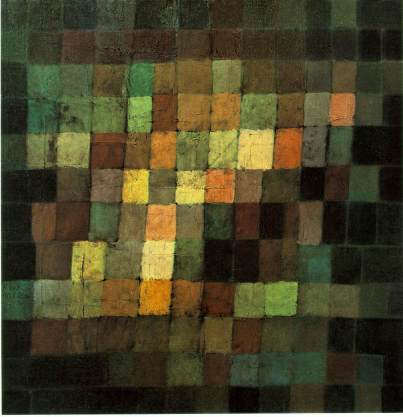
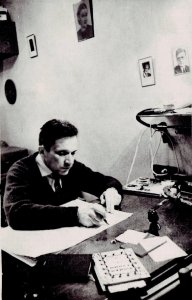
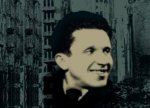
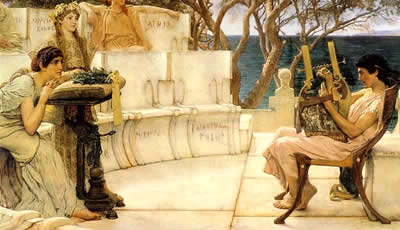
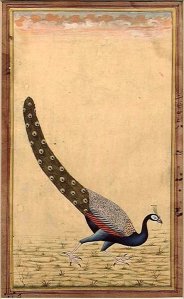
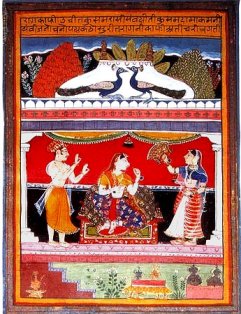

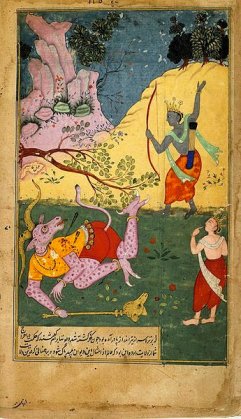
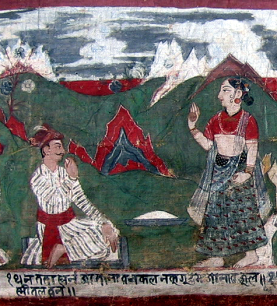
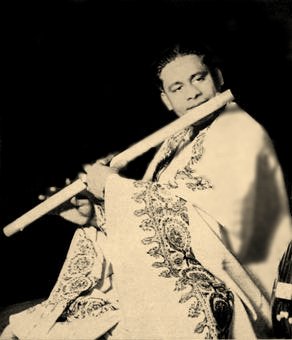
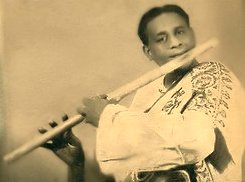
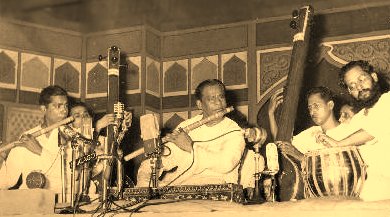
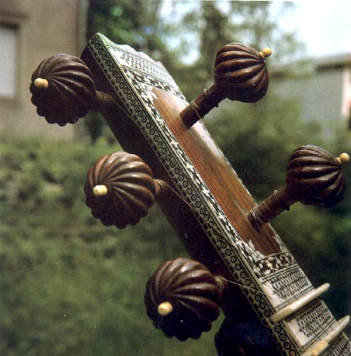
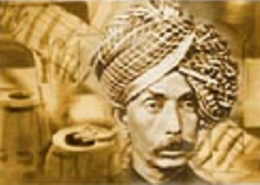
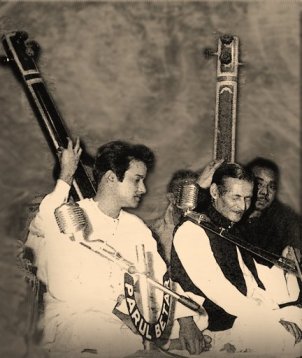
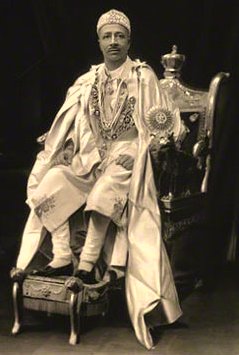
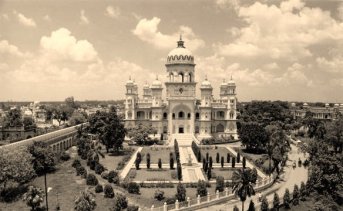
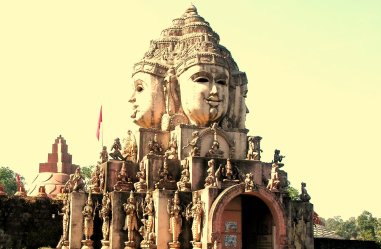
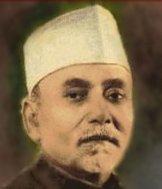
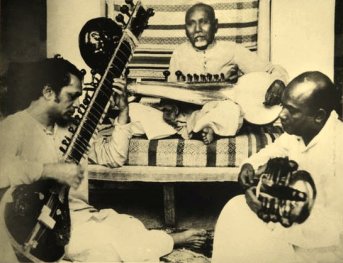
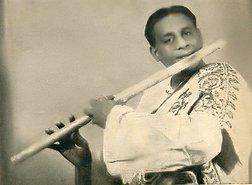
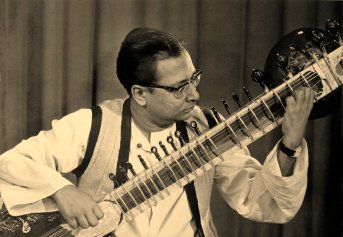
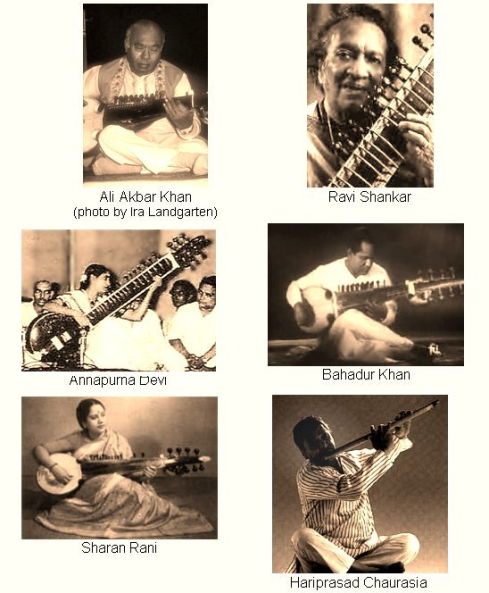
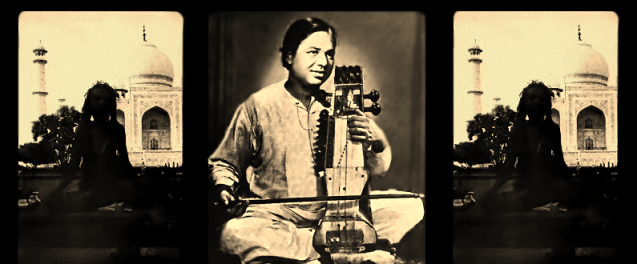
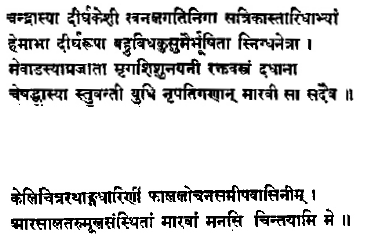
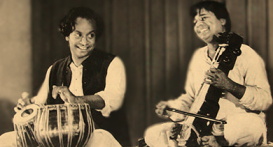
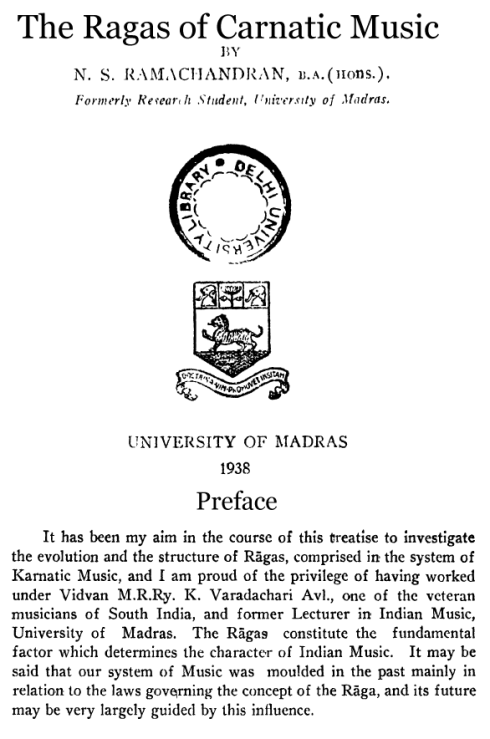 ***
***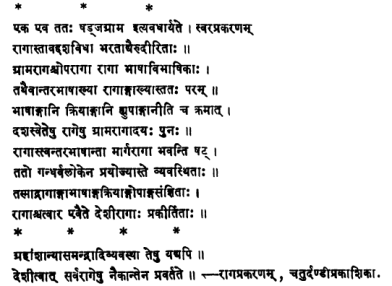




You must be logged in to post a comment.